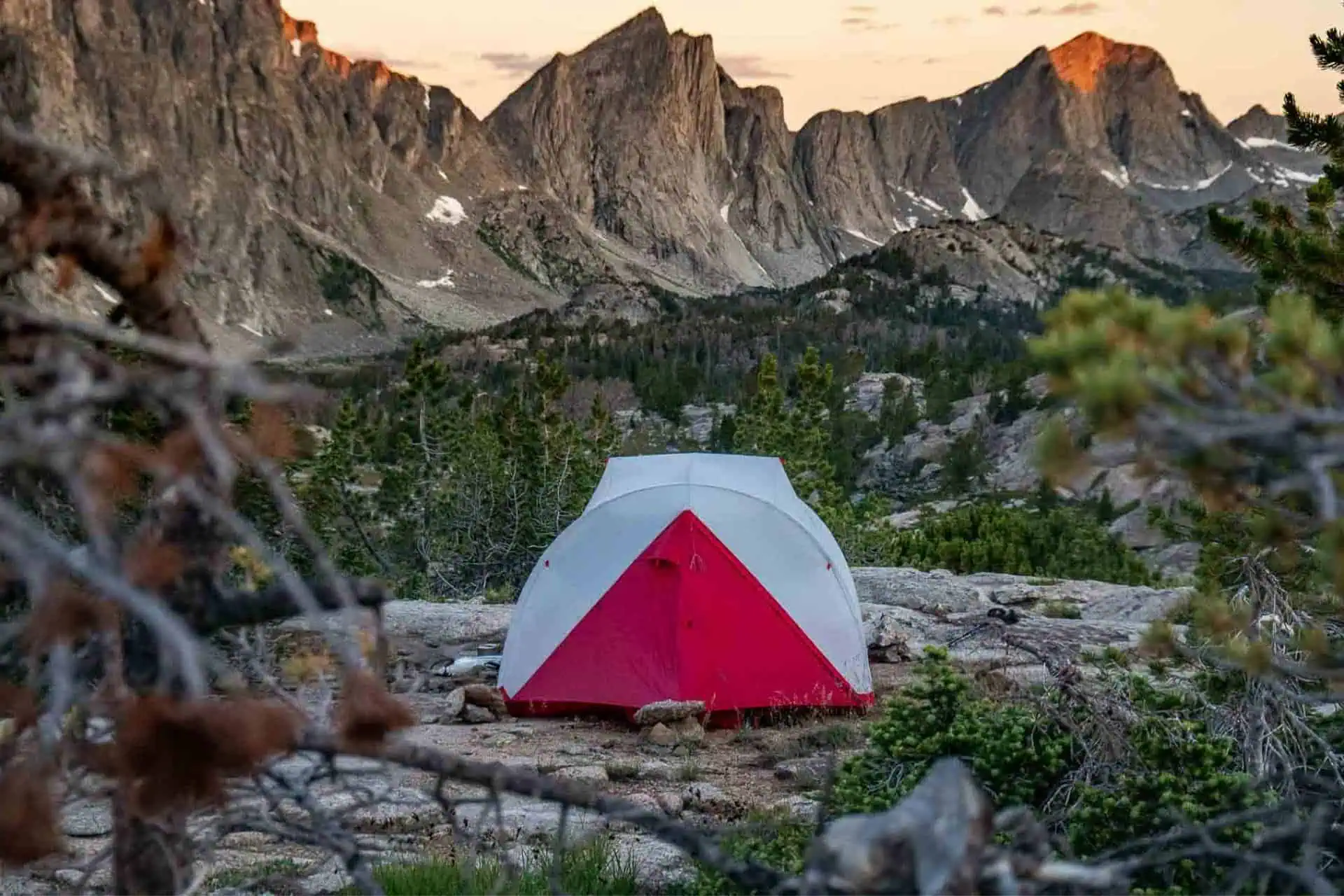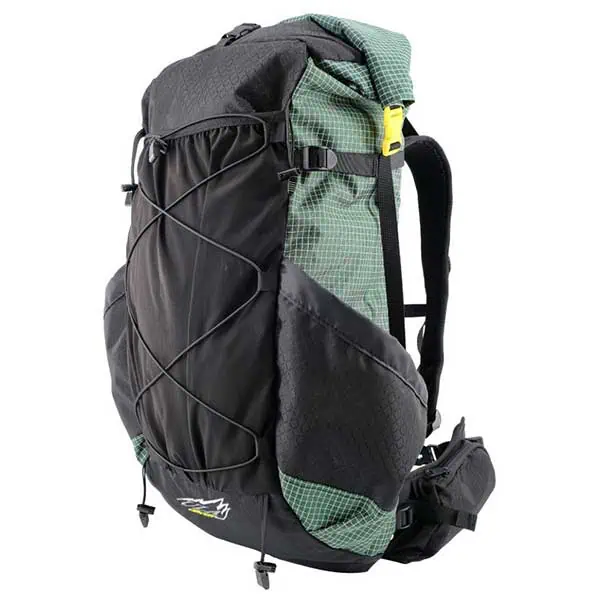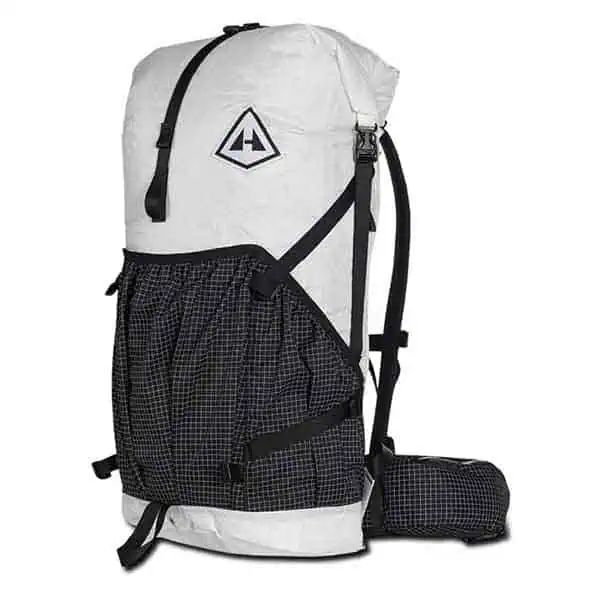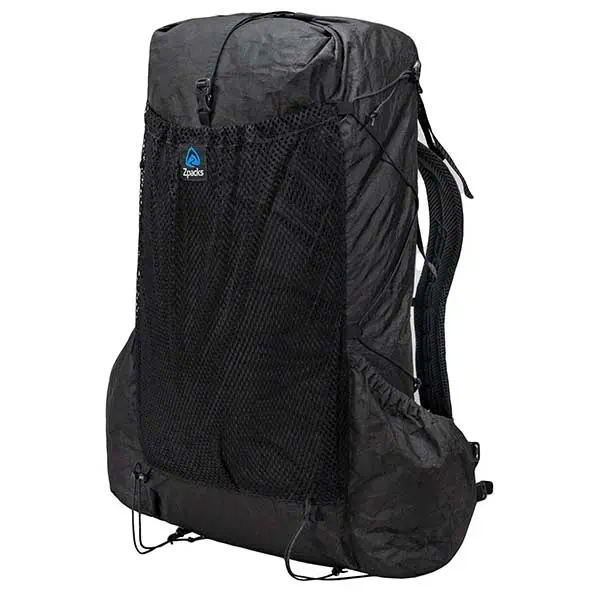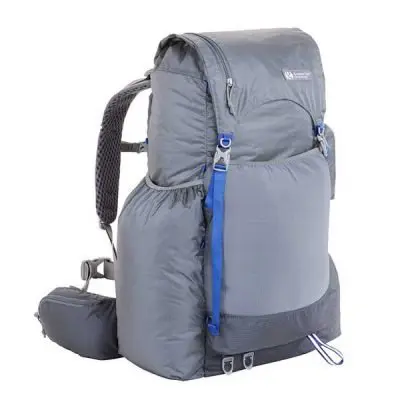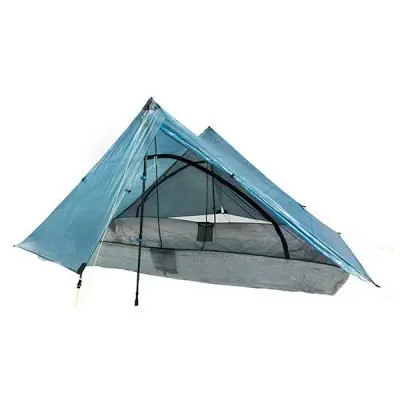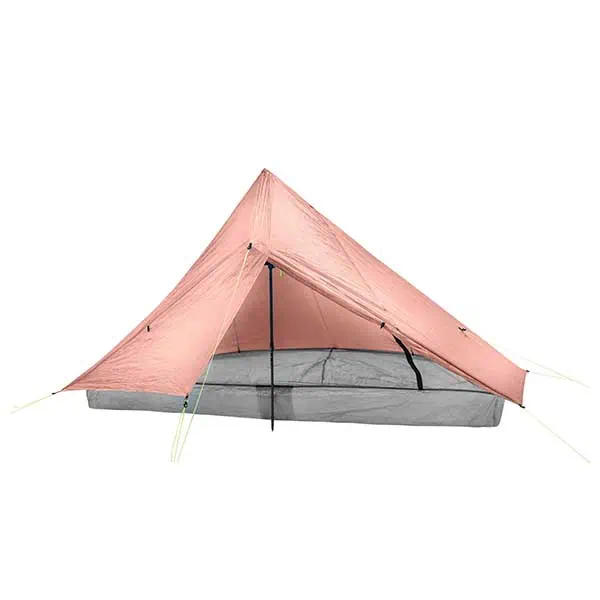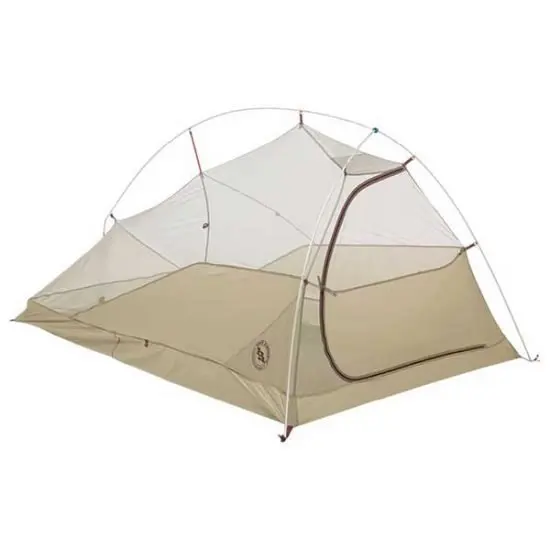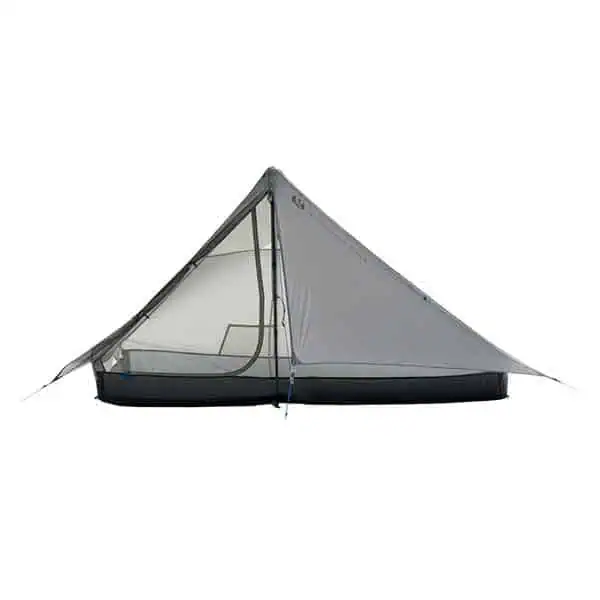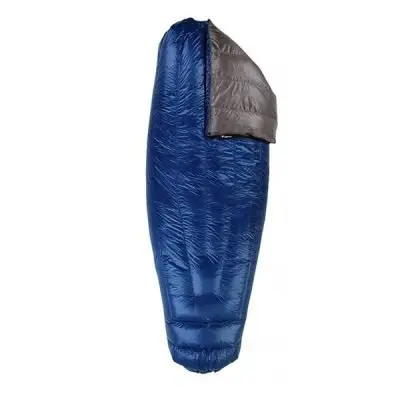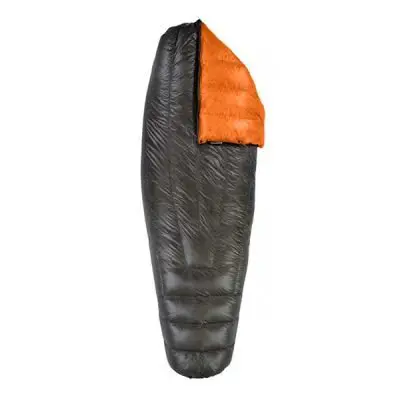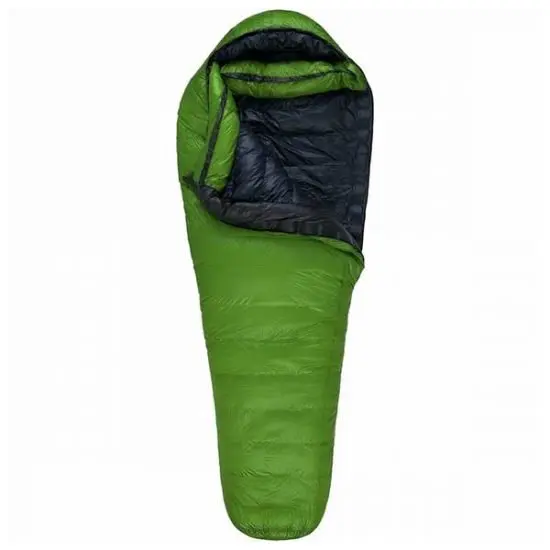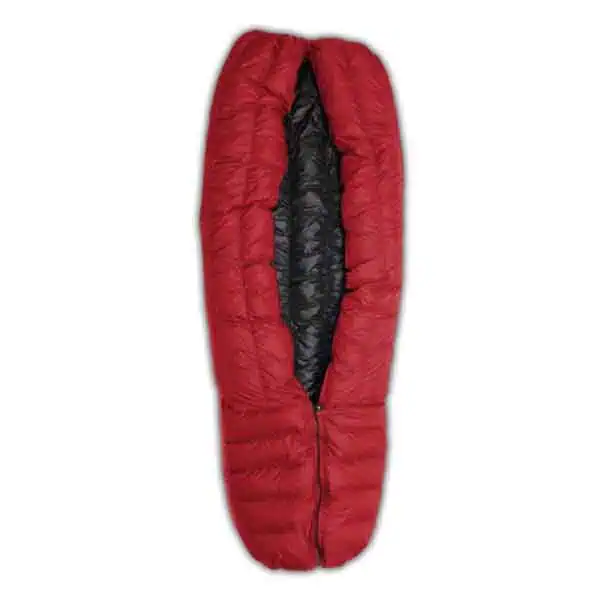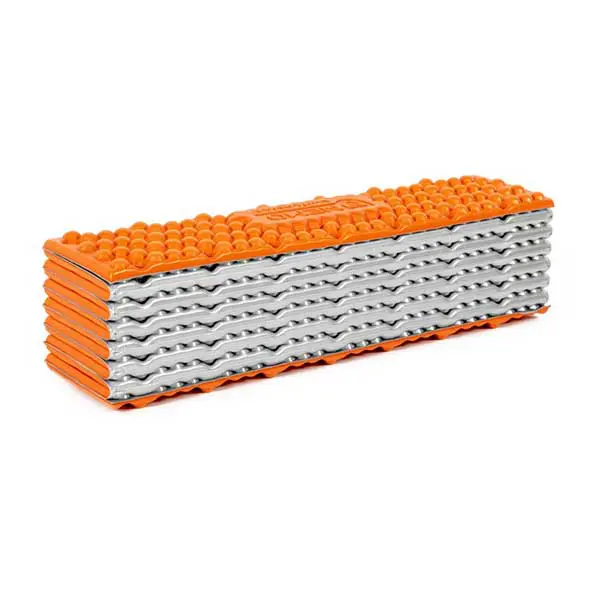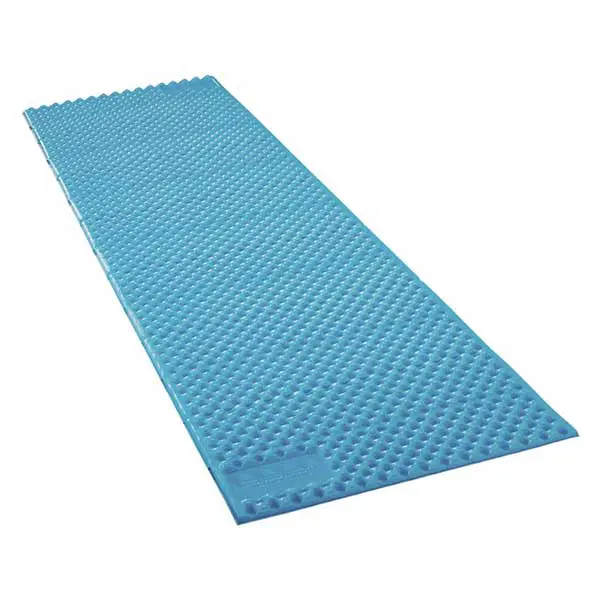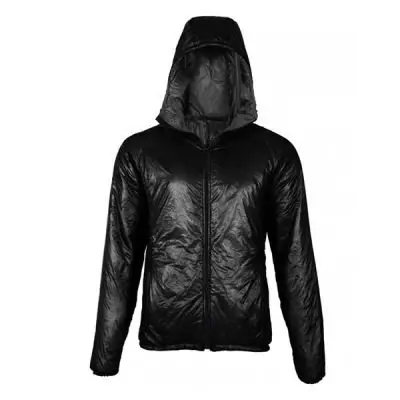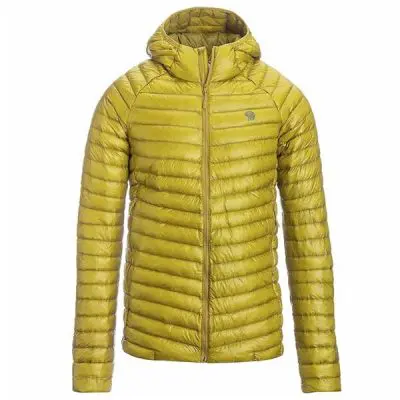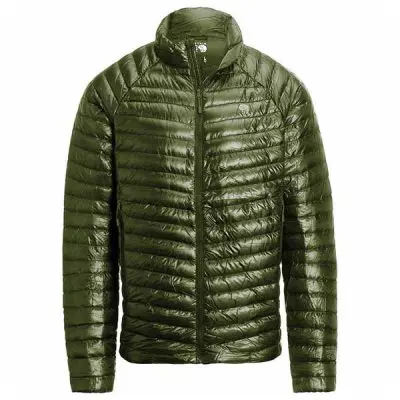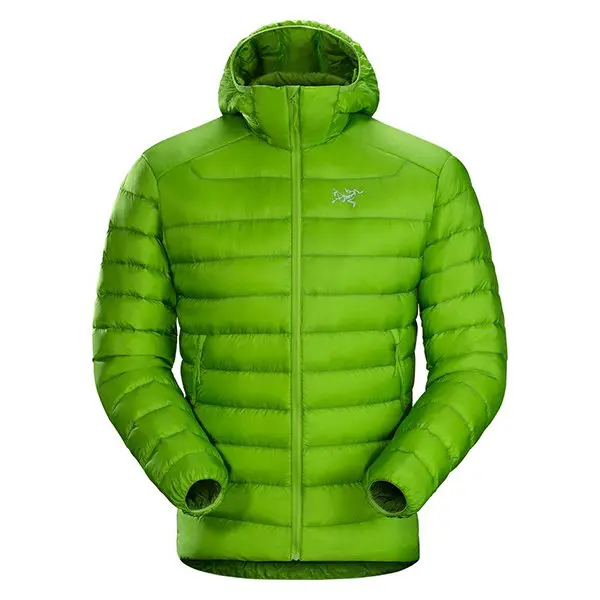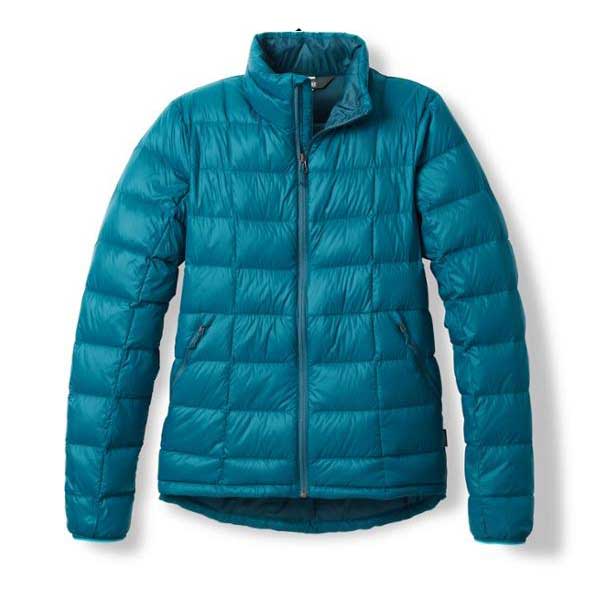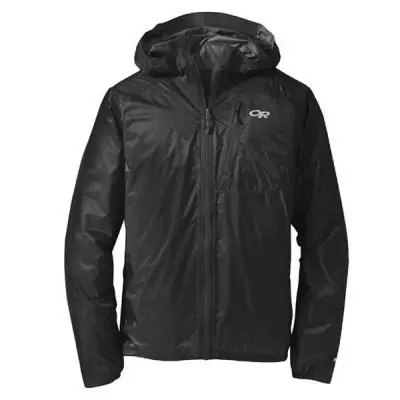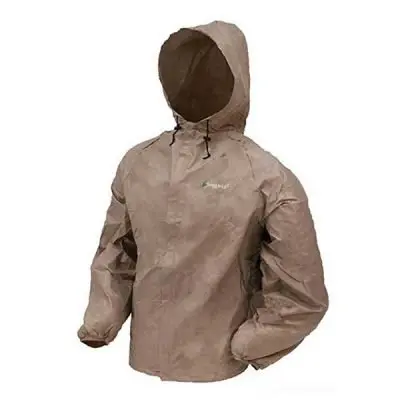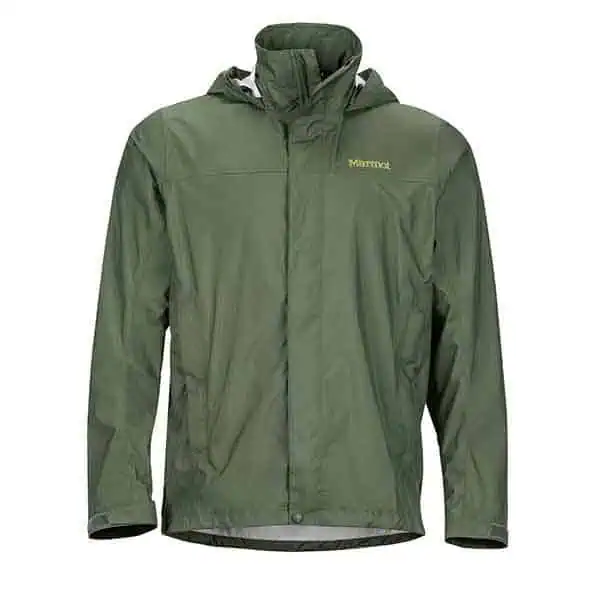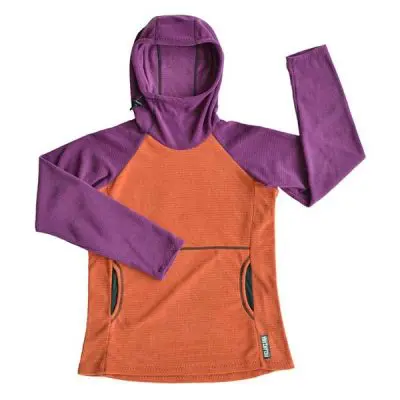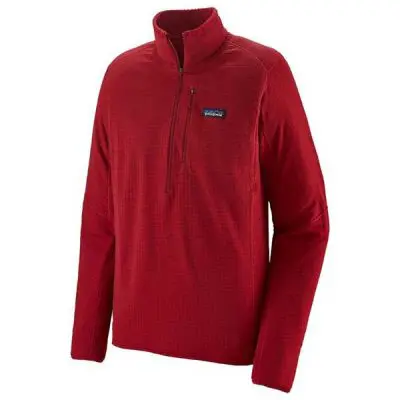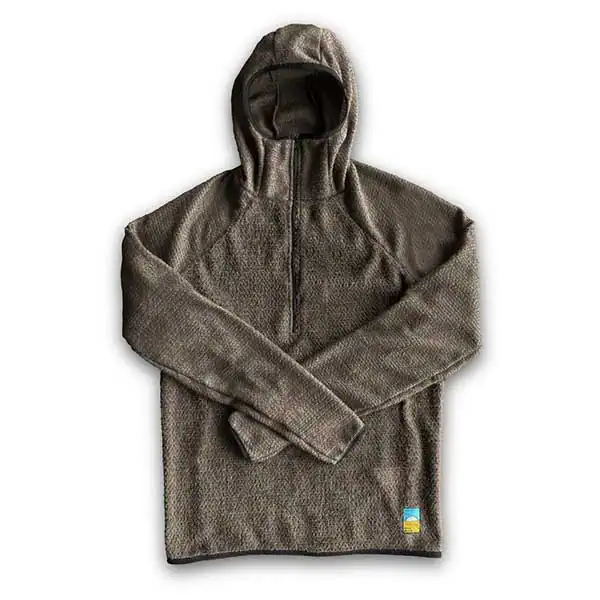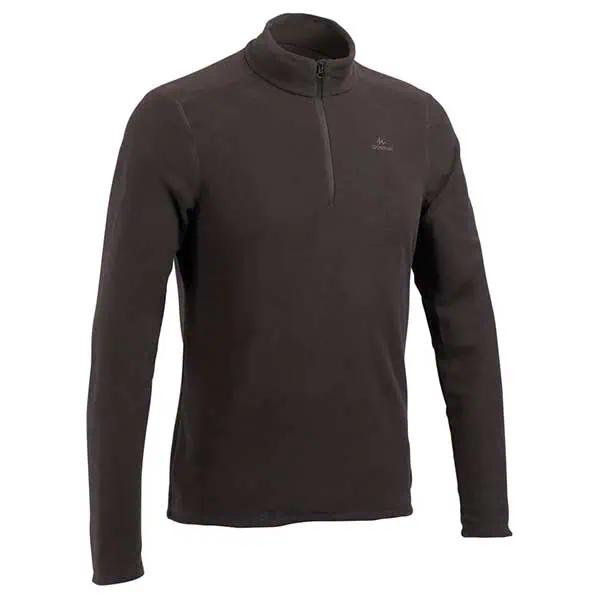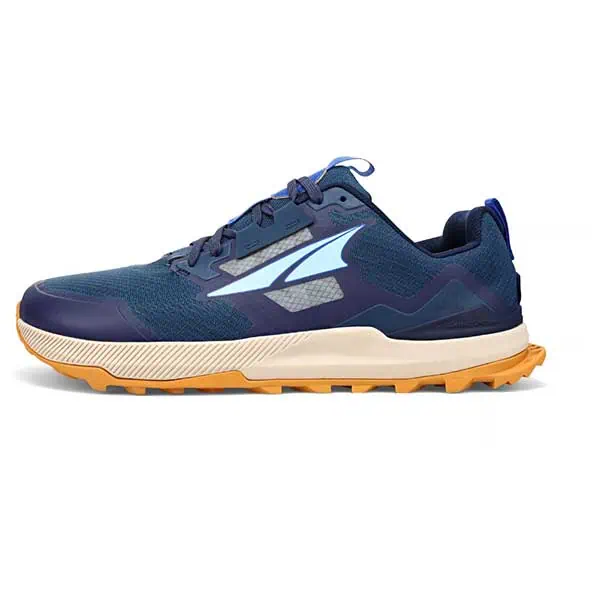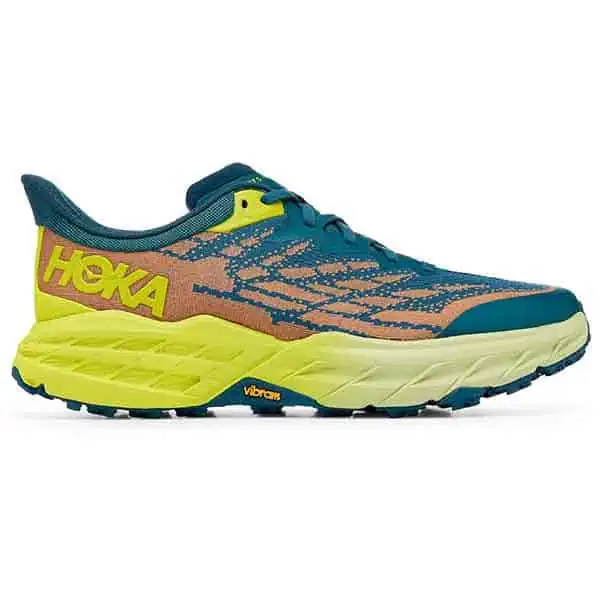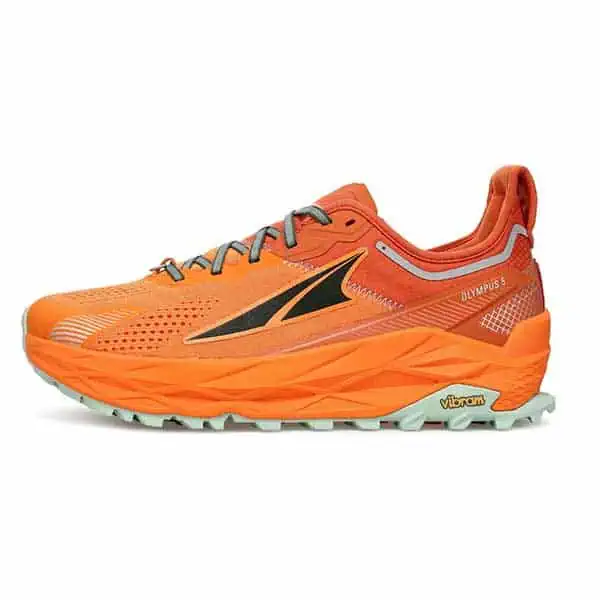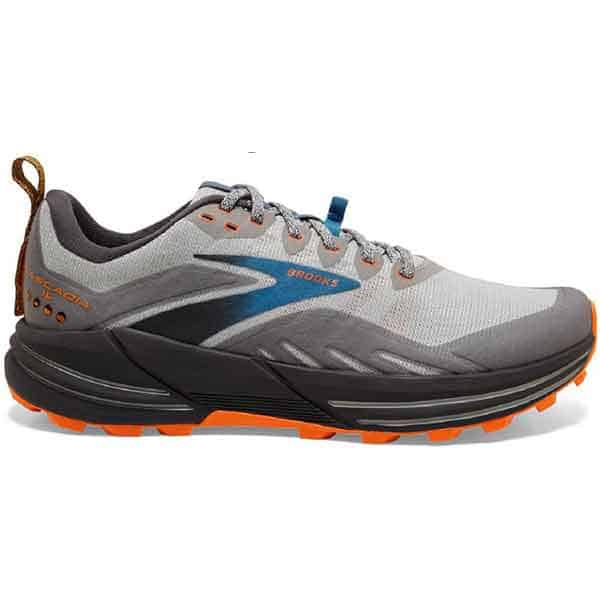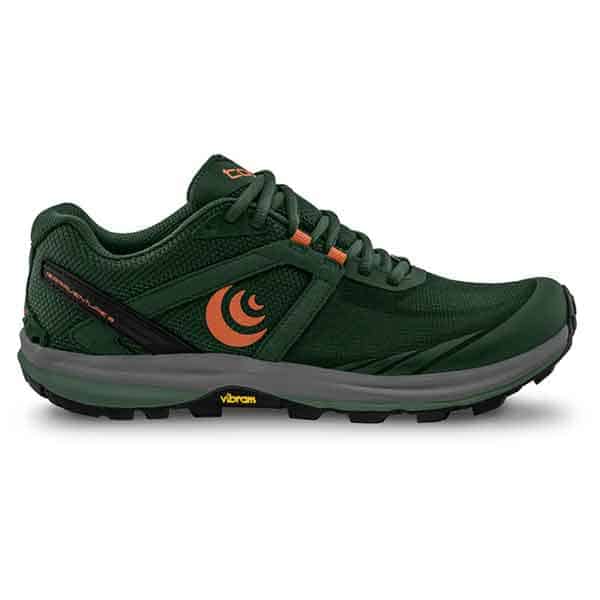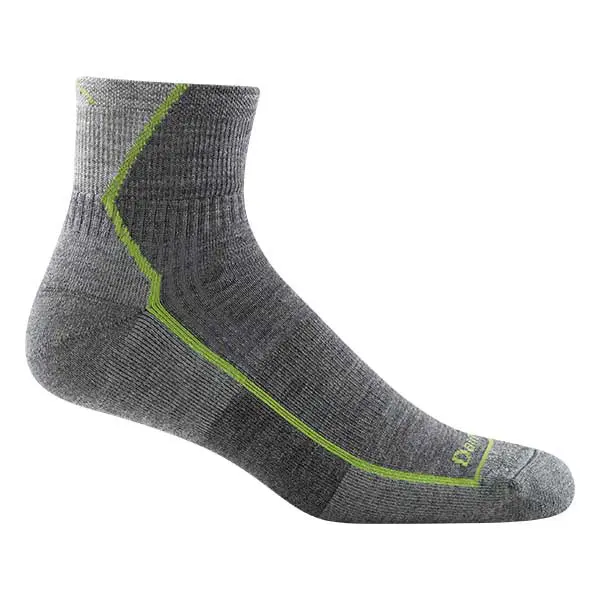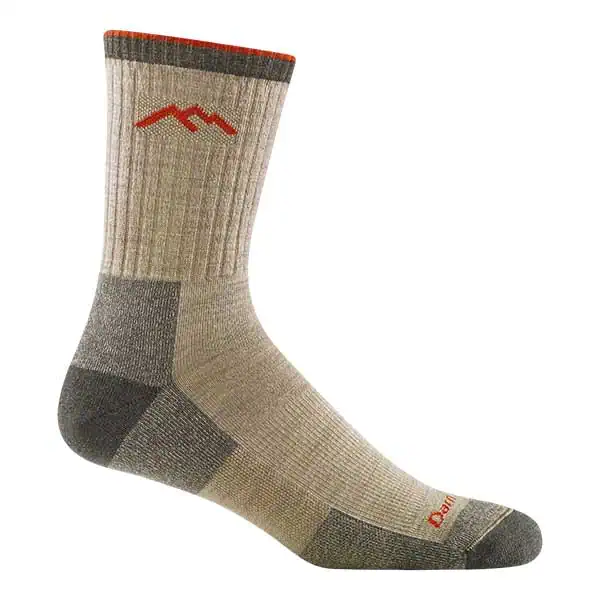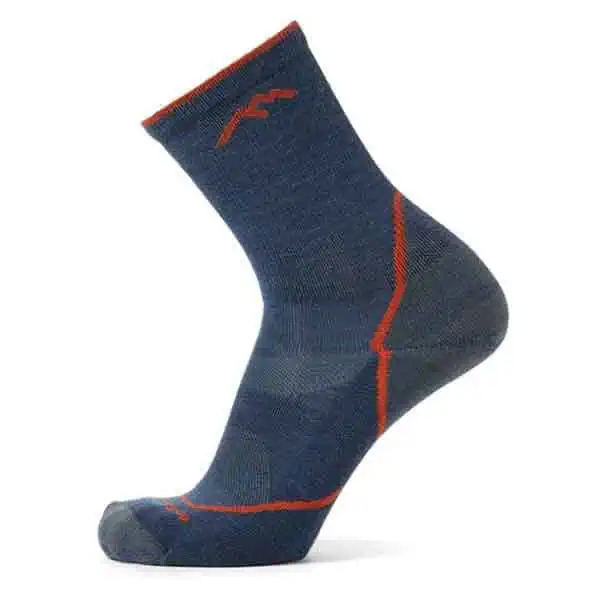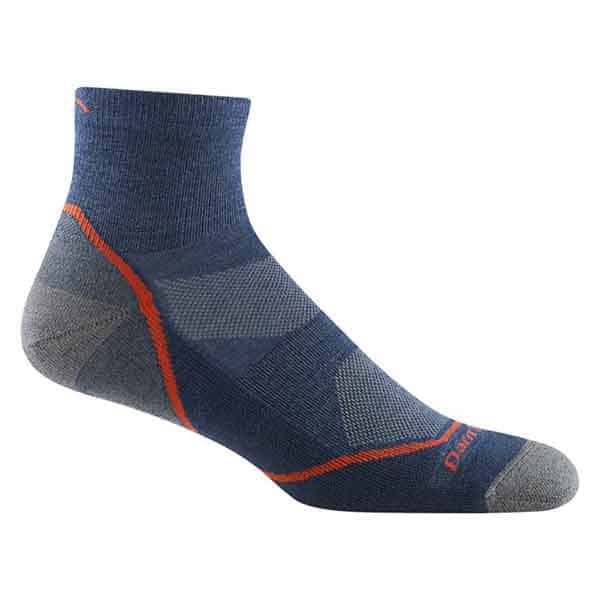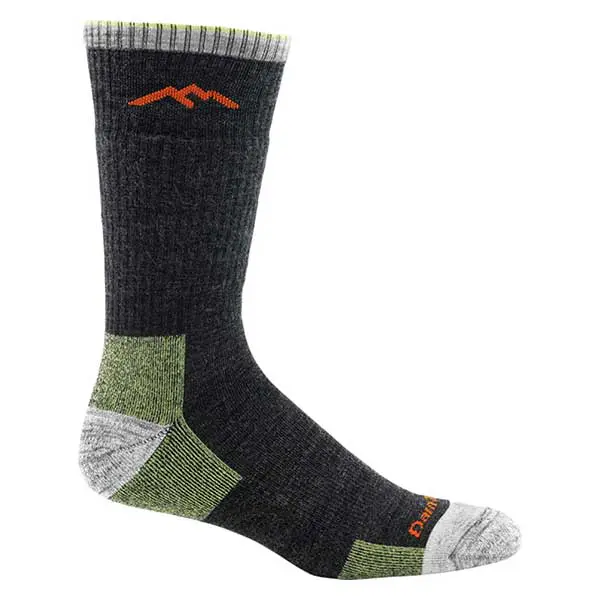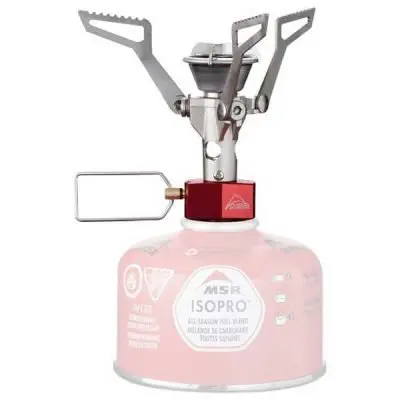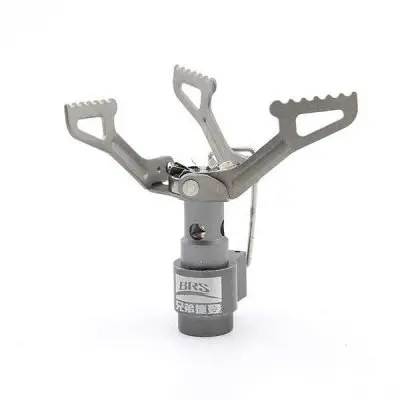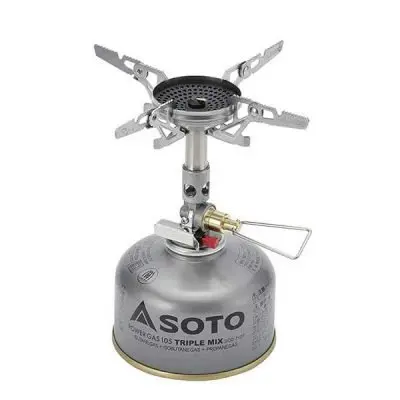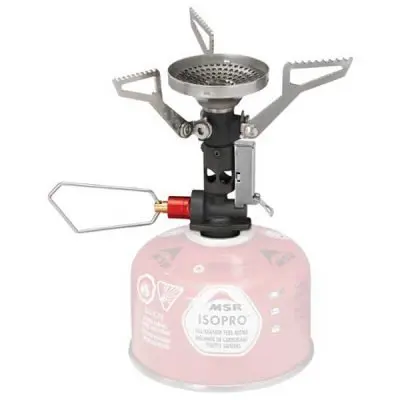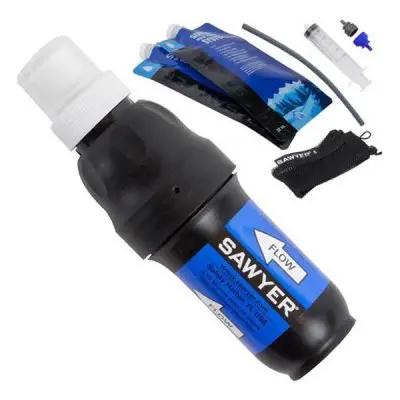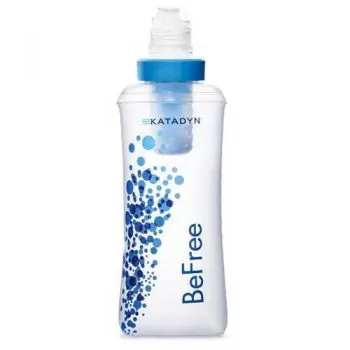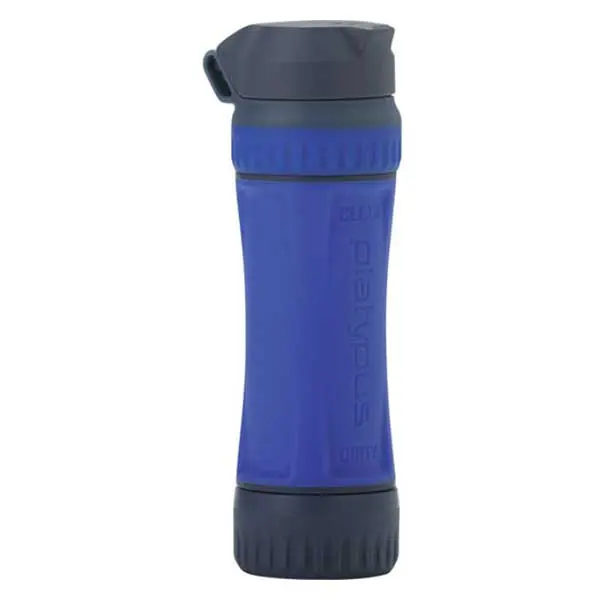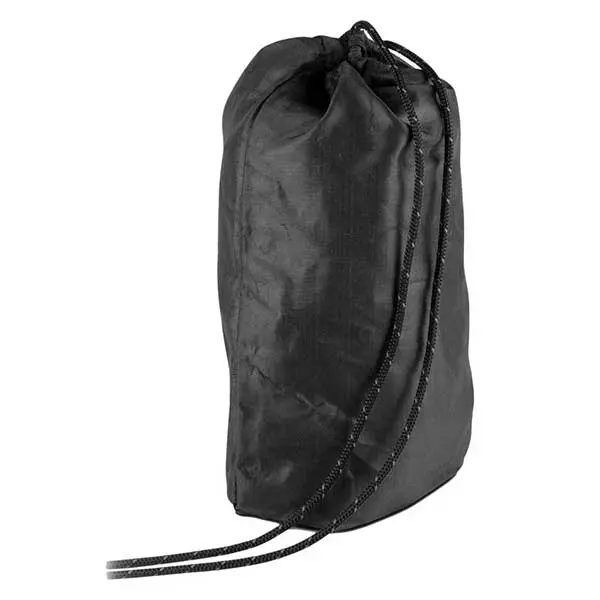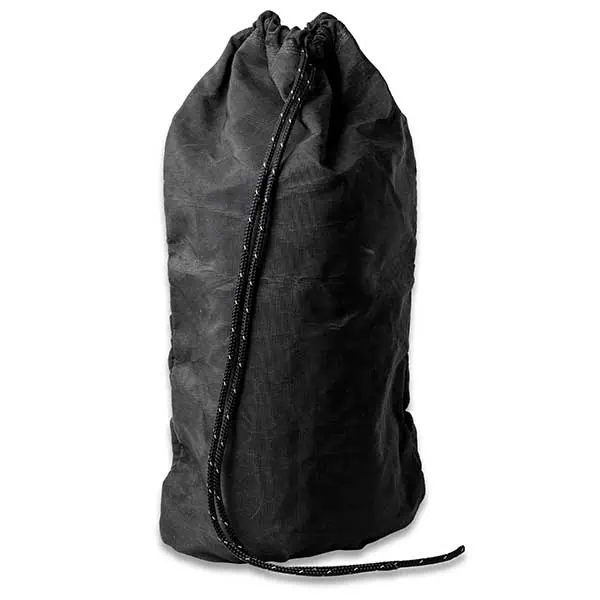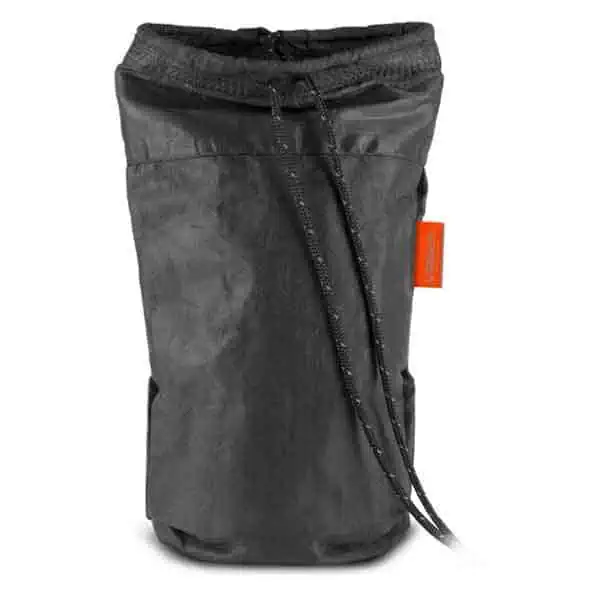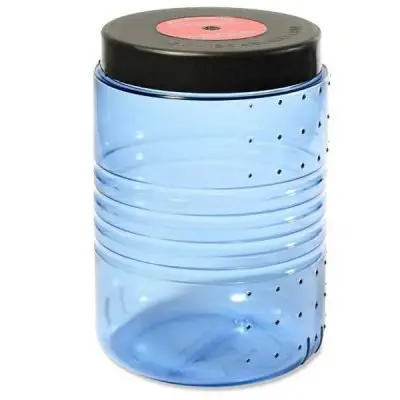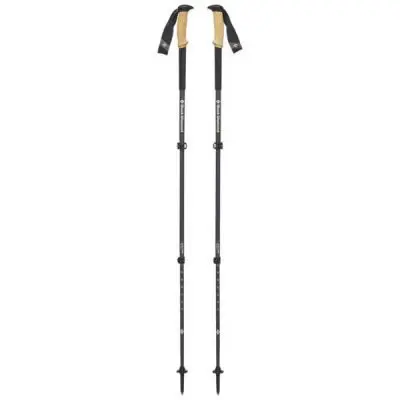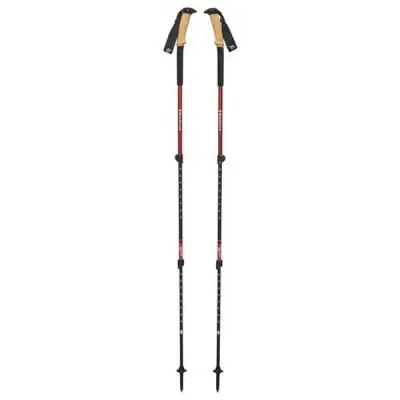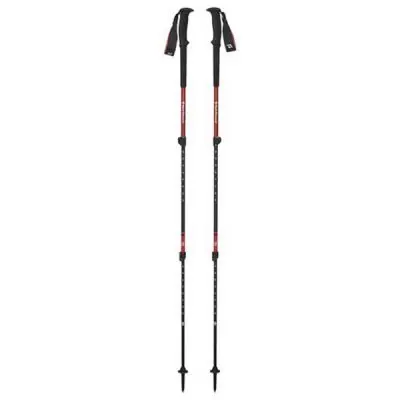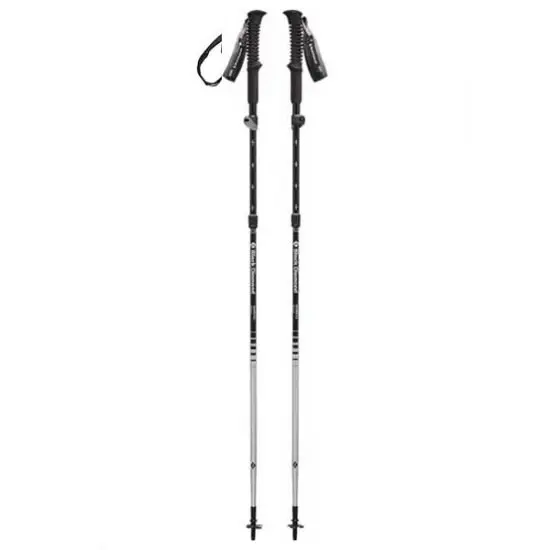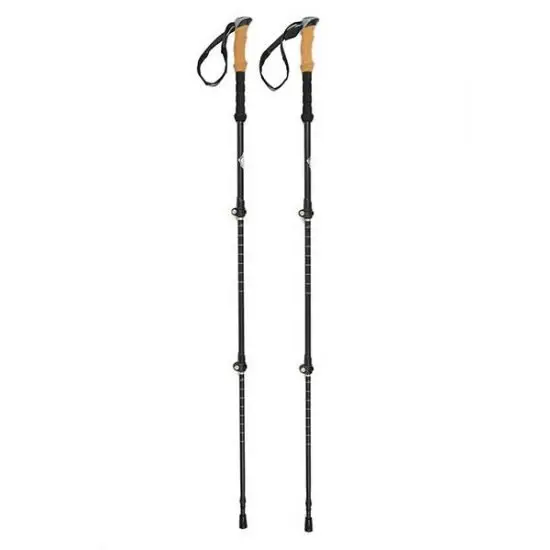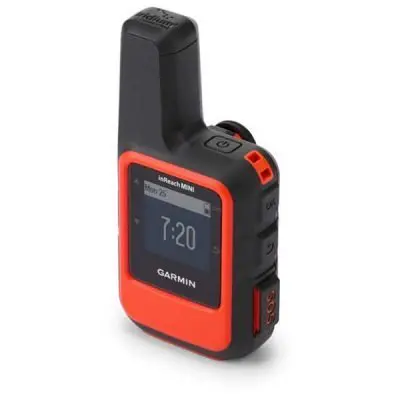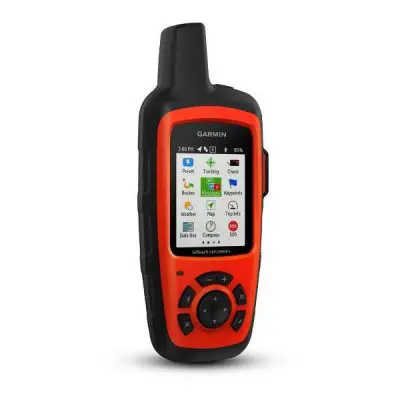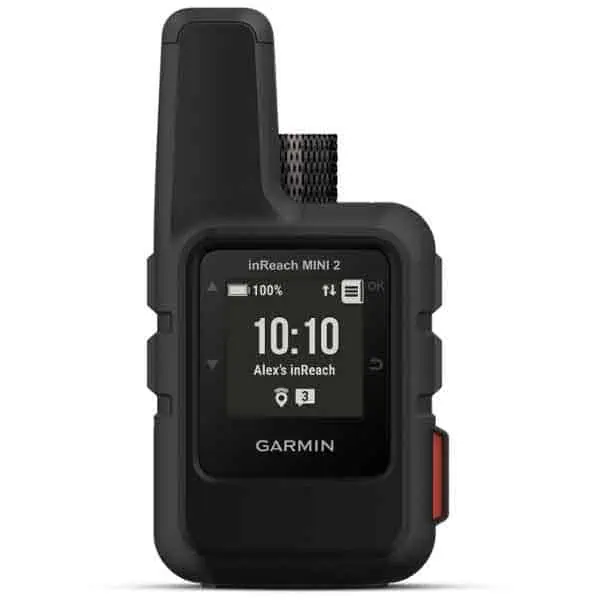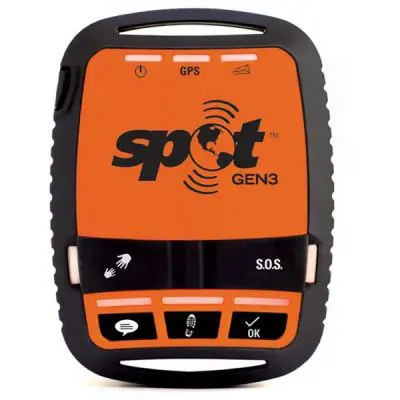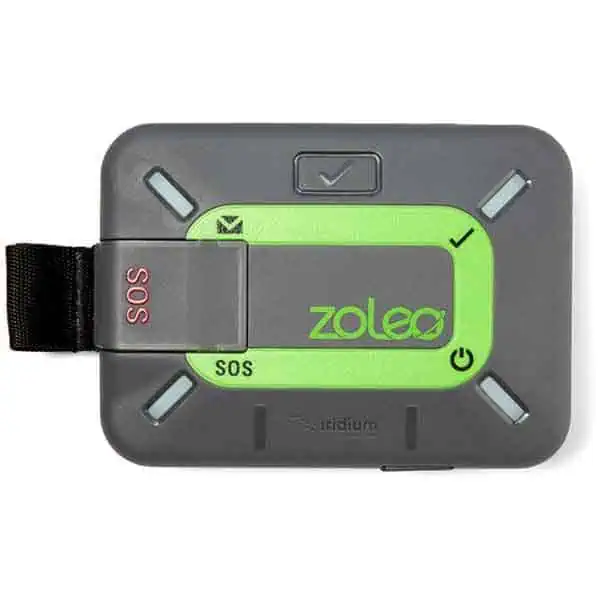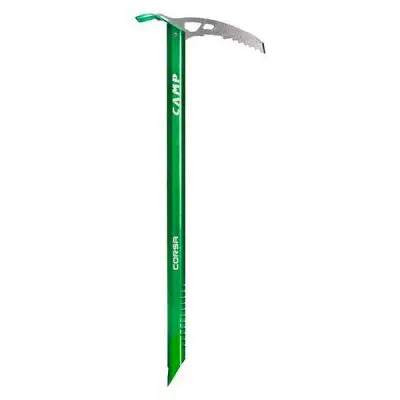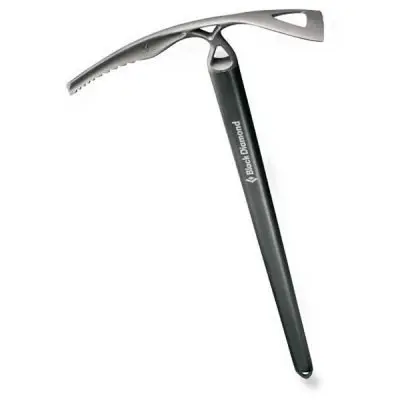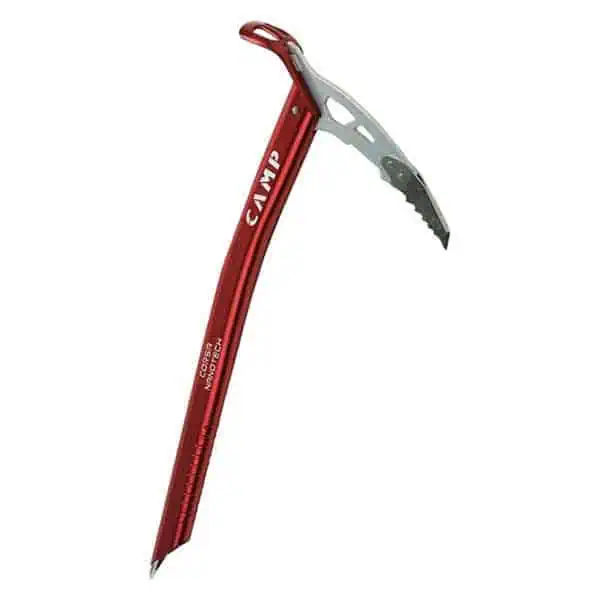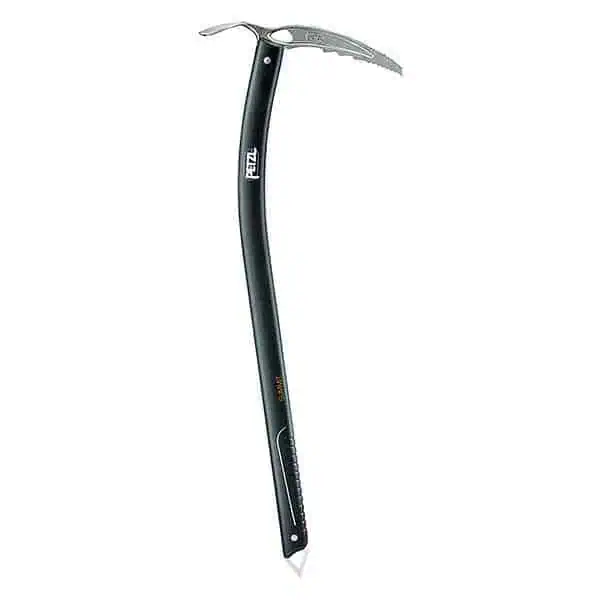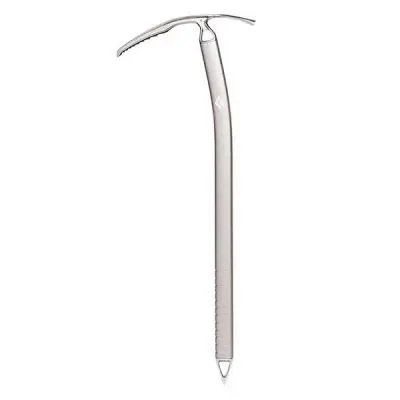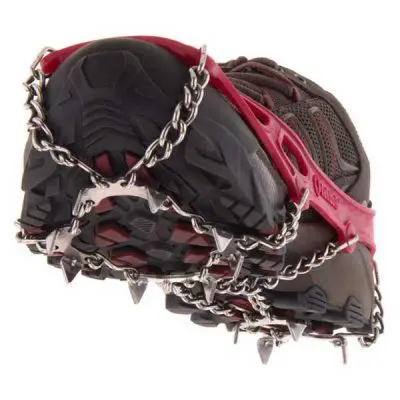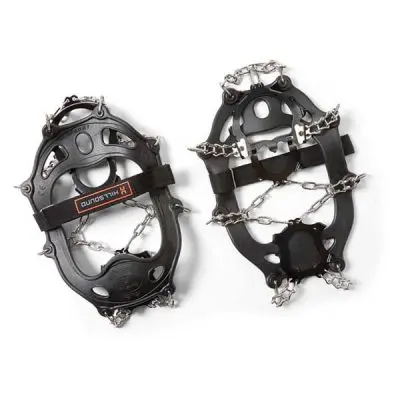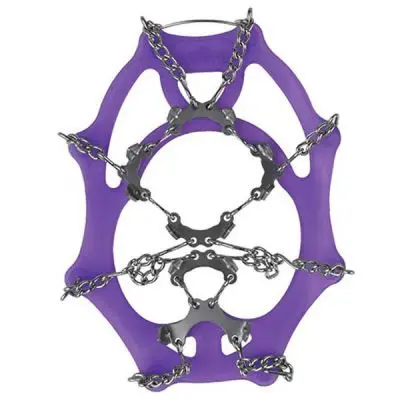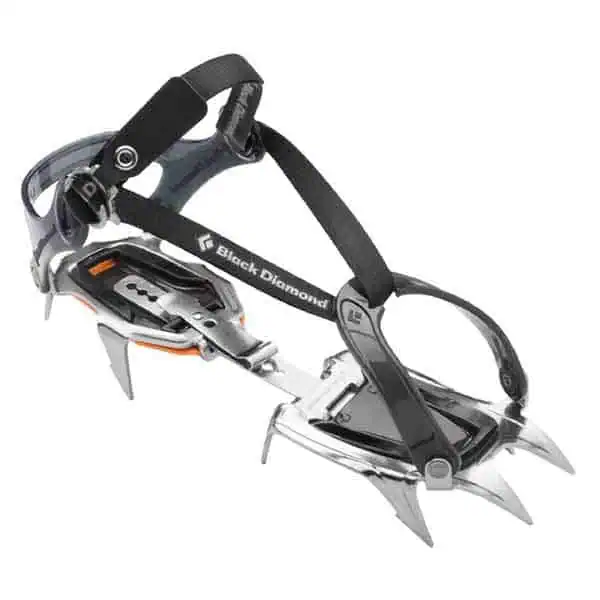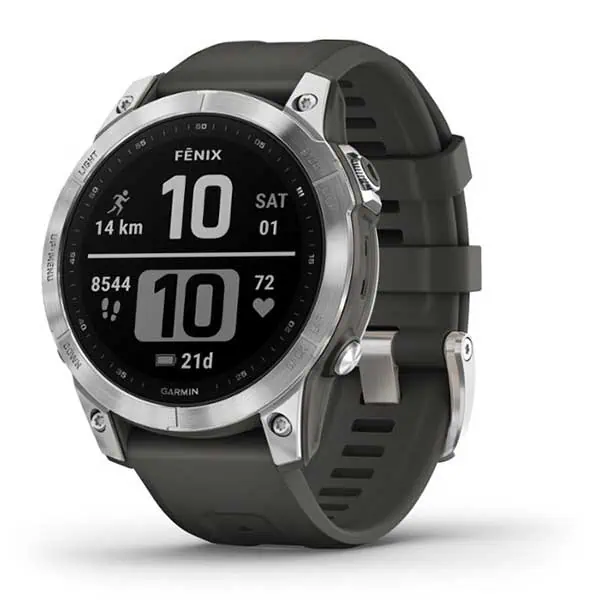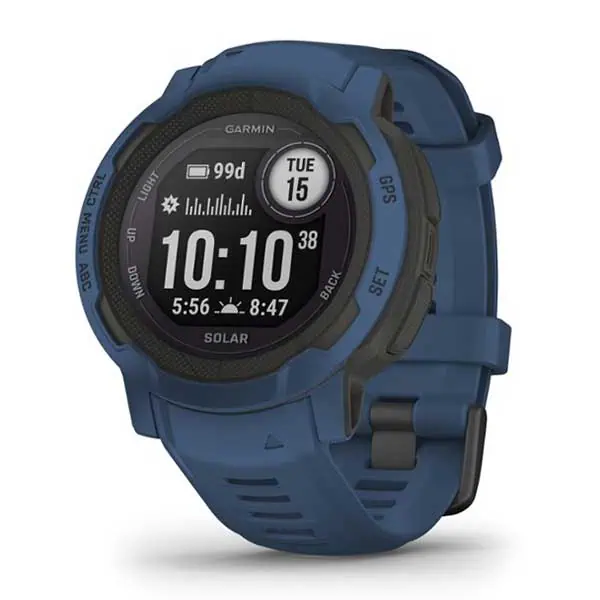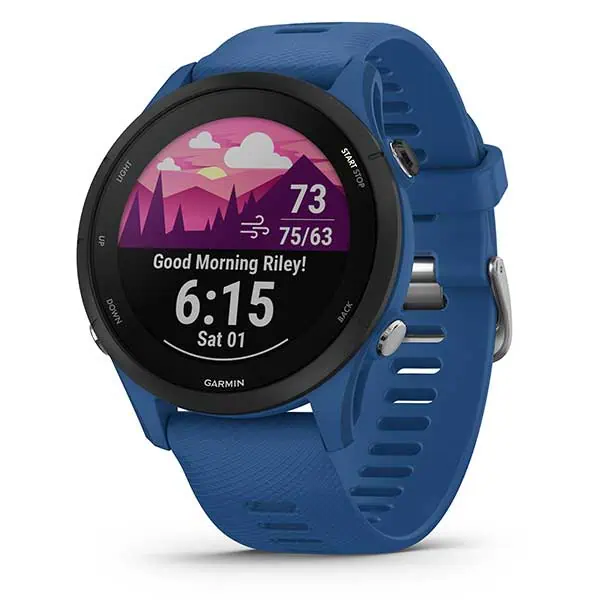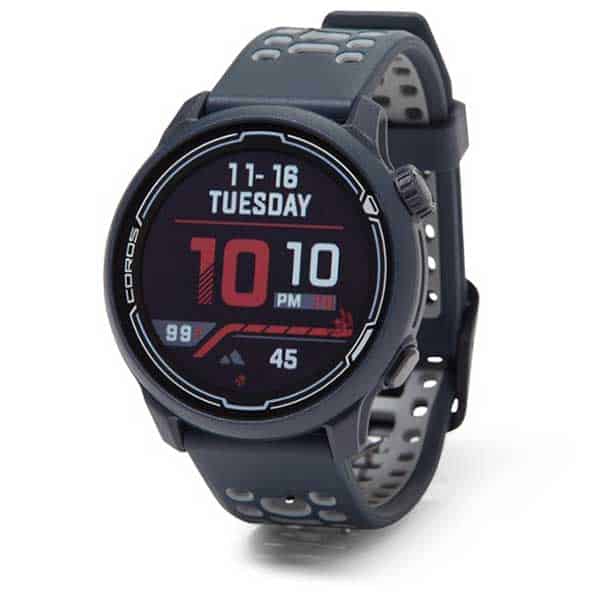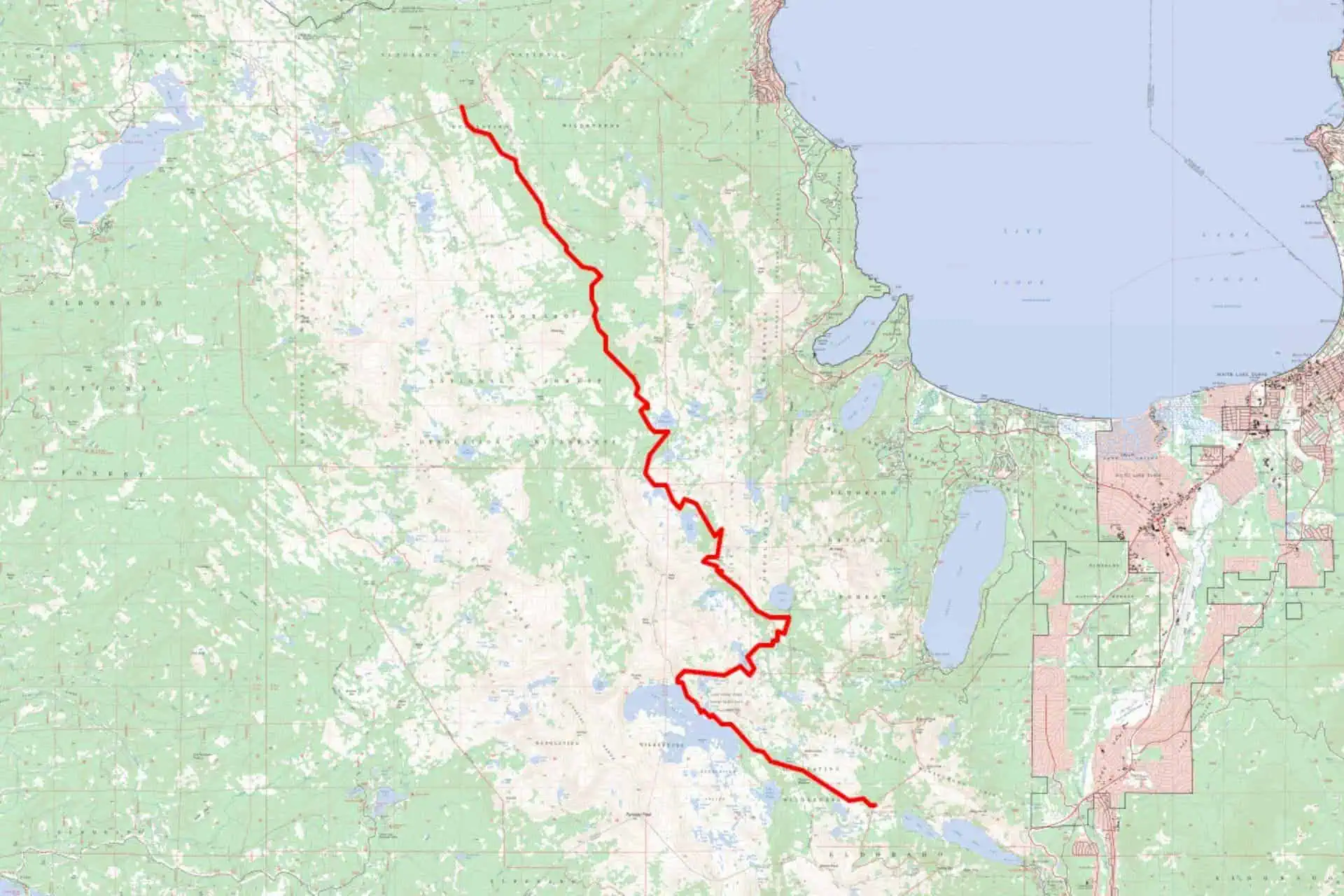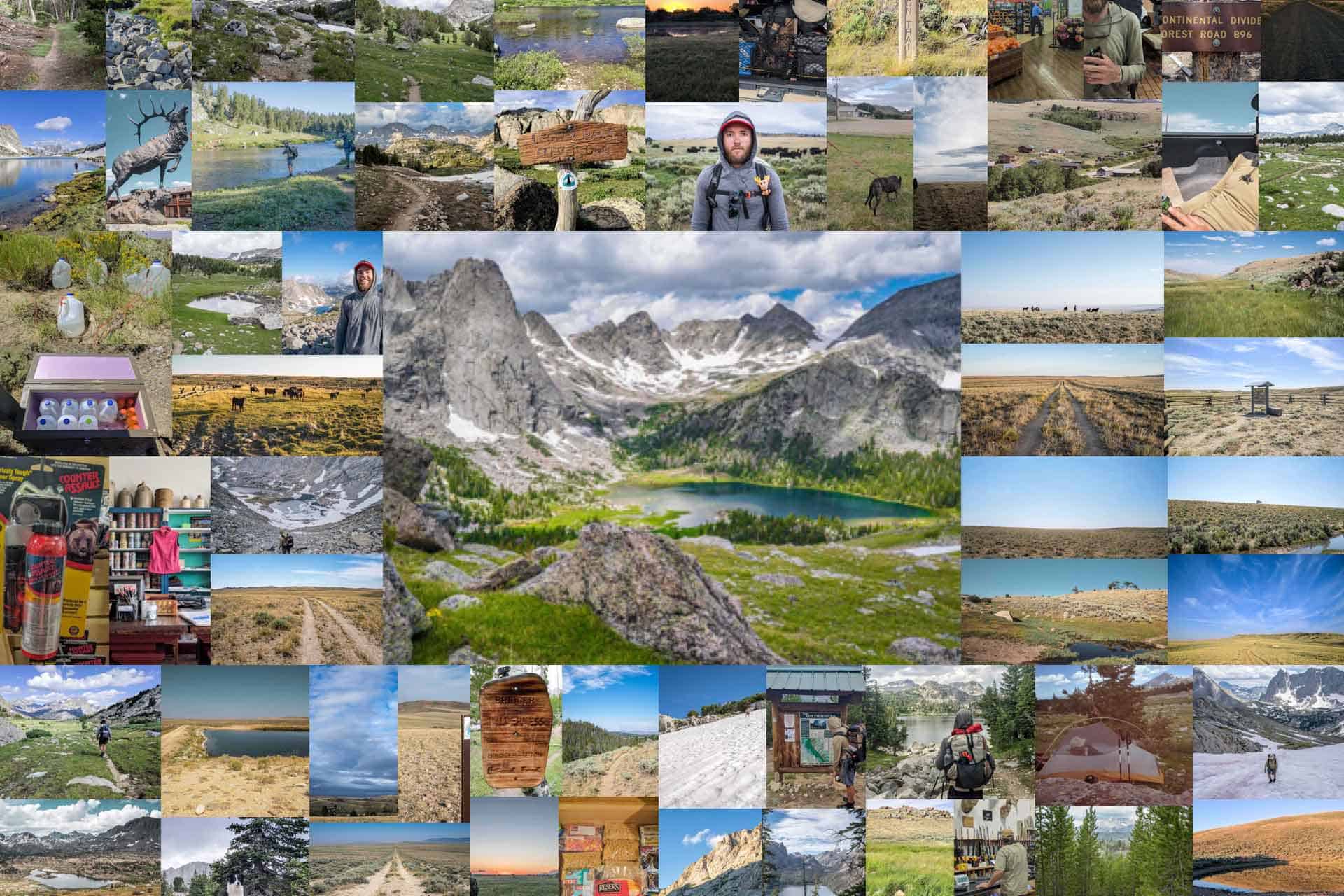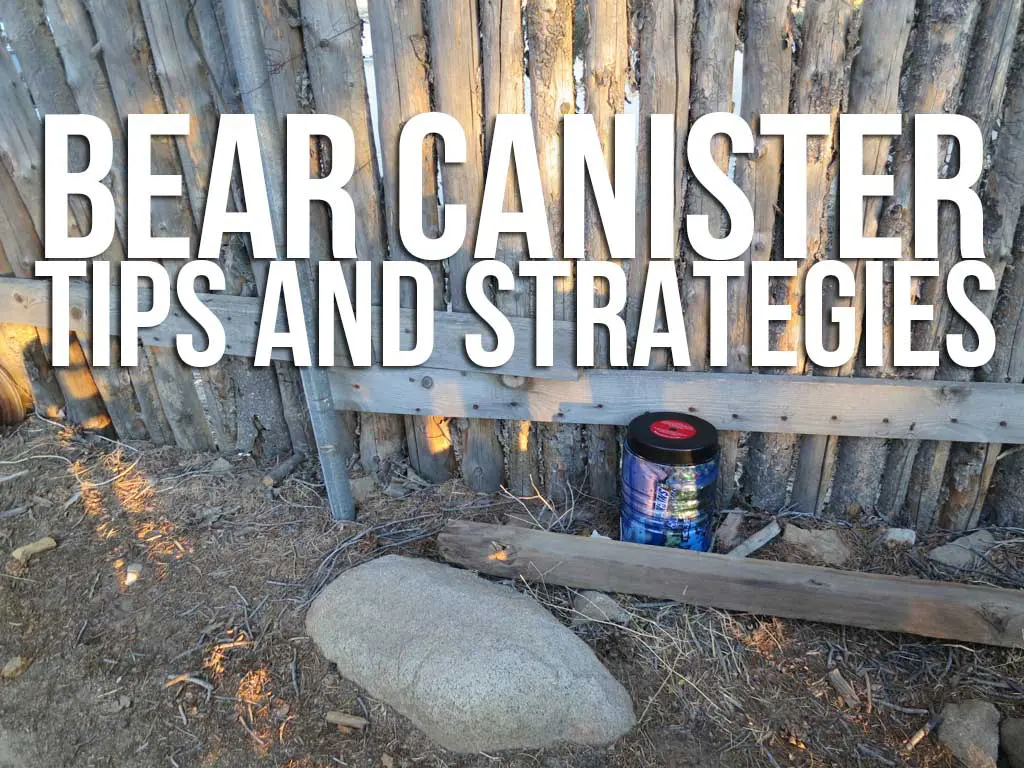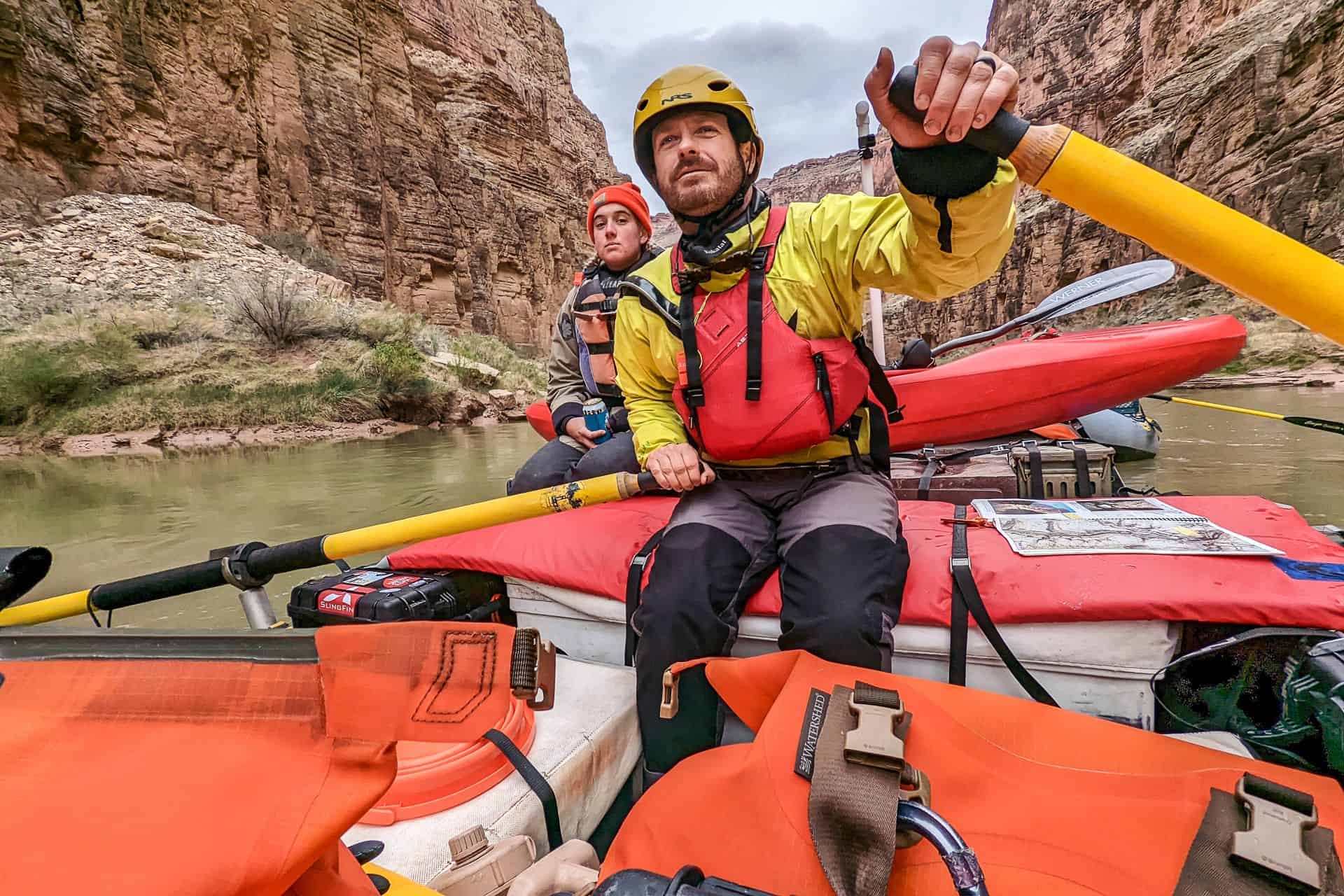Continental Divide Trail Gear Guide: Class of 2022 Survey
In the second installment of this year’s Continental Divide Trail Thru-Hiker Survey, we dive into gear for hiking the CDT. Continental Divide Trail gear lists vary wildly between hikers and (spoiler alert) it’s impossible to find a perfect CDT gear list. That said, we can try.
I’ve organized this in a way that I hope will give a comprehensive picture of what gear CDT thru-hikers are using. This post covers the highest-rated gear, the most common gear, base weights, gear advice, and more.
The gear covered here includes backpacks, shelters, sleeping bags, sleeping pads, insulated jackets, rain jackets, fleeces, shoes, socks, stoves, water treatment, trekking poles, ice axes, traction systems, food storage, satellite messengers/PLBs, fitness trackers, luxury items, and more.
This year, I’ve changed up the layout a bit and I think I’m happy with the results. Hopefully, the article flows a bit more smoothly and the data is a bit more accessible. The goal is for this to be a useful resource for CDT hikers, so if there’s anything that you think is missing, please leave a comment below.
I hope you enjoy this year’s Continental Divide Trail Gear Guide brought to you by the CDT Class of 2022.

Notes on the Data
- This year we have 235 completed surveys – a 7.5% increase versus last year and the most ever completed in a single season.
- In the past, I have had separate headings for the highest-rated and the most common pieces of gear for each category. The tables are now sortable which means to see the highest (and lowest) rated, you can simply sort the table. This avoids having what would essentially amount to the same information twice but in a different order.
- The Continental Divide Trail and thru-hiking in general come with a lot of acronyms and jargon you’re likely unfamiliar with if you’re new to the world of border-to-border foot travel. If you find anything unclear, the thru-hiker glossary may be of use. If you still can’t find what you’re looking for, feel free to drop a comment and let me know.
- I ask that respondents do their best to accurately respond to questions. Not every hiker answers every question and not every answer is guaranteed 100% accurate (e.g. someone may mistakenly report spending $10,000 on their hike instead of $9,000).
- I refer to survey respondents collectively as this year’s “class“. Remember, this is a sample (albeit a large one) and not a comprehensive survey of every person on the CDT this year.
- The results invoke some math. I suggest you familiarize yourself with the words average, median (M), and standard deviation (σ) if you’re looking to get the most out of your time here.
- For stats requiring the length of the CDT for a calculation (e.g. mileage/day), I use 2,982 mi / 4,799 km (the distance used in the FarOut Guides CDT app).
- Backpacks use capacities closest to 50 or 55 liters (if multiple options are available) based on this year’s average of 52 liters.
- Sleeping bags and quilts use the highest fill power available and the temperature rating closest to 20°F/-6°C (if multiple options are available).
- Ice axes use the length closest to 60 cm (if multiple options are available).
- For the highest-rated gear, I only considered gear used and rated by at least ten hikers.
- All ratings listed are the average (on a scale of 1 to 10) from each hiker who rated the piece of gear.
- More detailed posts focused on CDT Gear, CDT Resupply, CDT Horror Stories, and CDT Advice in the coming weeks. If you would like to be notified of new surveys, click here.
Data Labels
- Thru-Hikers: all CDT thru-hikers
- Thru-Hikers (0): thru-hikers who did not complete the CDT
- Thru-Hikers (1): thru-hikers who completed the entire CDT
Most Common CDT Gear
I ask each survey respondent about the gear they used during their Continental Divide Trail hike. With this information, we can easily see what the most popular pieces of gear were on the trail. Here’s what this year’s “Most Common CDT Gear List” backpack had in it – and what that theoretical backpack was.
- Backpack: ULA Circuit (2.29 lbs / 1.038 kg | $280)
- Shelter: Zpacks Duplex (1.19 lbs / 539 g | $699)
- Sleeping bag: Enlightened Equipment Revelation (20.9 oz / 593 g | $410)
- Sleeping pad: Therm-a-Rest NeoAir XLite (12.5 oz / 354 g | $200)
- Insulated jacket: Enlightened Equipment Torrid – Men’s/Women’s (8.4 oz / 238 g | $185)
- Shell: Outdoor Research Helium – Men’s/Women’s (6.3 oz / 179 g | $159)
- Fleece: Melanzana Microgrid Hoodie (12.2 oz / 346 g | $78)
- Shoes: Altra Lone Peak – Men’s/Women’s (22 oz / 624 g | $150)
- Socks: Darn Tough Hiker Quarter Midweight – Men’s/Women’s (2 oz / 57 g | $20)
- Stove: MSR PocketRocket 2 (2.4 oz / 68 g | $50)
- Water treatment: Sawyer Squeeze (3 oz / 85 g / $39)
- Food storage: Ursack Major XL (8.8 oz / 250 g | $110)
- Trekking poles: Black Diamond Alpine Carbon Cork (17.1 oz / 485 g / $200)
- PLB: Garmin inReach Mini (3.5 oz / 100 g | $350)
- Ice axe: C.A.M.P. USA Corsa (8.2 oz / 232 g | $120)
- Traction device: Kahtoola MICROspikes (11 oz / 312 g | $75)
- Fitness tracker: Garmin Fenix (2.79 oz / 79 g | $700)
Total weight – Big 3 (pack, shelter, sleeping bag): 4.78 lbs / 2.170 kg
Total weight – Big 4 (Big 3 + sleeping pad): 5.56 lbs / 2.524 kg
All gear (minus snow gear): 8.36 lbs / 3.790 kg (this does not include ice axe, traction, trekking poles, shoes, socks, or fitness tracker)
All gear: 9.55 lbs / 4.334 kg (this does not include trekking poles, shoes, socks, or fitness tracker)
In addition to the items noted above, these total base weights (a backpack’s weight minus food, water, and consumables – like poop paper) are missing a few pieces of gear (headlamp, extra clothing, electronics, etc.). It brings us over halfway to the year’s average starting base weight of 17.64 lbs / 8.001 kg. Note that the stove included in this list, the MSR PocketRocket 2, does not include the weight of a pot.
The total price of all this gear? $3,125 (with one pair of shoes and one pair of socks); I did not include the $700 price tag of the Garmin Fenix. The average thru-hikers spent on gear prior to beginning their hikes? $1,163 (M = $1,000 | σ = $966).
Highest-Rated Gear List
In addition to asking each Continental Divide Trail hiker what gear they used, I ask hikers to rate each piece of gear. No point in doing what everyone else is doing if none of them are happy with their choices, right? I’ve also used the results to construct a top-ten list for each of the categories surveyed.
Here’s what this year’s “Highest-Rated CDT Gear List” backpack had in it – and what that theoretical backpack was.
- Backpack: ULA Circuit (2.29 lbs / 1.038 kg | $280)
- Shelter: NEMO Hornet 2P (2.38 lb / 1.08 kg | $400)
- Sleeping bag/quilt: Western Mountaineering Versalite (32 oz / 907 g | $670)
- Sleeping pad: Therm-a-Rest Z Lite Sol (14 oz | 397 g | $55)
- Insulated jacket: Montbell Plasma 1000 Jacket – Men’s/Women’s (4.9 oz / 138 g | $329)
- Shell: Enlightened Equipment Visp – Men’s/Women’s (5.95 oz / 169 g | $210)
- Fleece: Arc’teryx Delta LT – Men’s/Women’s (9.3 oz / 265 g | $149)
- Shoes: Topo Terraventure – Men’s/Women’s (20.4 oz / 578 g | $130)
- Socks: Darn Tough Hiker Micro Crew Midweight – Men’s/Women’s ($25)
- Stove: SOTO Windmaster (2.3 oz / 65 g | $65)
- Water treatment: Aquamira (3 oz / 85 g | $15)
- Food storage: Ursack Major 2XL (10.9 oz / 309 g | $130)
- Trekking poles: Leki Legacy Lite (18 oz / 510 g | $100)
- PLB: Garmin inReach Mini 2 (3.5 oz / 100 g | $400)
- Ice axe: C.A.M.P. USA Corsa Nanotech (8.9 oz / 252 g | $160)
- Traction: Snowline Chainsen Light (8.6 oz / 243 g | $70)
- Fitness tracker: Garmin Forerunner (2.79 oz / 79 g | $600)
Total weight – Big 3 (pack, shelter, sleeping bag): 6.67 lbs / 3.025 kg
Total weight – Big 4 (Big 3 + sleeping pad): 7.54 lbs / 3.422 kg
All gear (minus snow gear): 10.4 lbs / 4.553 kg (this does not include ice axe, traction, trekking poles, shoes, socks, or fitness tracker)
All gear: 11.3 lbs / 5.048 kg (this does not include trekking poles, shoes, socks, or fitness tracker)
In addition to the items noted above, these total base weights (a backpack’s weight minus food, water, and consumables – like poop paper) are missing a few pieces of gear (headlamp, extra clothing, electronics, etc.). It brings us over halfway to the year’s average starting base weight of 17.64 lbs / 8.001 kg. Note that the stove included in this list, the SOTO Windmaster, does not include the weight of a pot.
The total price of all this gear? $3,188 (with one pair of shoes and one pair of socks); I did not include the $600 price tag of the Garmin Forerunner. The average thru-hikers spent on gear prior to beginning their hikes? $1,163 (M = $1,000 | σ = $966).
Backpacks
One thing everyone definitely (probably?) needs if they’re going on an extended backpacking trip? A backpack.
A backpack can do a lot to define a hiker and you can usually tell a lot (or at least you can sometimes think you can tell a lot) about a hiker by simply taking a look at their pack. In this first section, we’ll look at some backpack stats as well as the most common and highest-rated backpacks among Continental Divide Trail hikers this year.
Here is the average backpack size used by thru-hikers.
Thru-Hikers
51.8
(M = 55 | σ = 11.2)
Thru-Hikers (1)
52.1
(M = 55 | σ = 11.1)
Thru-Hikers (0)
50.1
(M = 50 | σ = 11.9)
Hikers’ most common complaints when it came to backpacks this year? Packs were uncomfortable with heavy loads, packs weren’t durable, and packs chafed hikers’ hips.
CDT Hiker Backpacks
The ULA Circuit was the most common backpack on the Continental Divide Trail this year. It is a 2.29 lb / 1.038 kg pack capable of carrying up to 68 L and 35 lbs / 16 kg of gear. The Circuit was also the highest-rated pack among CDT hikers.
| # | BACKPACK | RATING | PRICE | WEIGHT | LITERS | MAX LOAD |
|---|---|---|---|---|---|---|
| 1 | ULA Circuit | 9.24 | $280 | 2.29 lb | 1.038 kg | 68 | 35 lb | 16 kg |
| 2 | Hyperlite Mountain Gear Southwest | 8.68 | $379 | 2.00 lb | 896 g | 55 | 40 lb | 18 kg |
| 3 | Zpacks Arc Haul | 6.57 | $399 | 1.30 lb | 590 g | 50 | 40 lb | 18 kg |
| 4 | Gossamer Gear Mariposa | 7.31 | $285 | 1.79 lb | 814 g | 60 | 35 lb | 16 kg |
| 5 | Osprey Exos | 7.55 | $260 | 2.84 lb | 1.288 kg | 58 | 35 lb | 16 kg |
| 6 | Hyperlite Mountain Gear Junction | 7.67 | $379 | 2.00 lb | 896 g | 55 | 40 lb | 18 kg |
| 7 | Hyperlite Mountain Gear Windrider | 7.29 | $379 | 2.00 lb | 896 g | 55 | 40 lb | 18 kg |
| 8 | Osprey Atmos AG | 7.83 | $270 | 4.00 lb | 1.814 kg | 50 | 35 lb | 16 kg |
| 9 | Zpacks Arc Blast | 8.50 | $375 | 1.28 lb oz | 580 g | 55 | 35 lb | 16 kg |
| 10 | Gossamer Gear Gorilla | 7.20 | $255 | 1.81 lb | 821 g | 50 | 30 lb | 14 kg |
Shelters
Shelters – basically the umbrella term for tents since there are also options such as bivy sacks, tarps, pyramids, and lean-tos – are another essential piece of equipment on the Continental Divide Trail.
A consideration for hikers when choosing their shelter is whether they would like said shelter to be freestanding. What is a freestanding shelter? It’s a shelter that needs only the tent body and its poles to be set up – no stakes or superfluous tie-outs required. An example of this kind of shelter is the year’s third most common shelter, the Big Agnes Copper Spur HV UL1.
Shelters that are not freestanding require that they be staked or tied out to be set up. These types of shelters typically (but not always) use trekking poles instead of the more traditional tent poles to be set up – something to be considered when looking at shelter weights and prices. An example of this kind of shelter is the year’s most common shelter, the Zpacks Duplex.
Lastly, a semi-freestanding shelter is one that (typically) uses tent poles and can stand on its own, but that requires stakes or tie-outs to be completely set up. An example of this kind of shelter is the year’s fourth most common shelter, the Big Agnes Fly Creek HV UL2.
The following is a breakdown of how many hikers were using a freestanding shelter.
The percentage of hikers using each type of shelter on the Continental Divide Trail this year.
- 58.6% – Not freestanding
- 28.6% – Freestanding
- 12.9% – Semi-freestanding
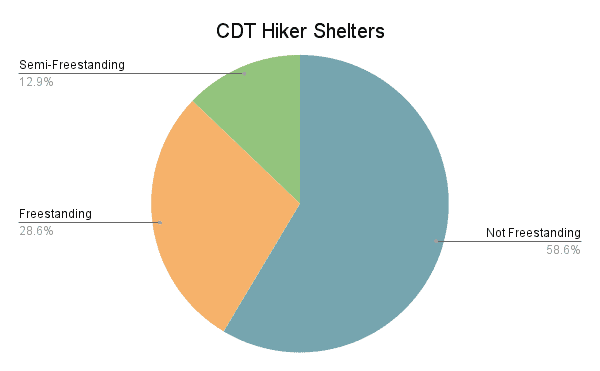
Of the top ten most common shelters, just two (the Big Agnes Copper Spur HV UL1 and Big Agnes Copper Spur HV UL2) are freestanding. Three others (the Big Agnes Fly Creek HV UL2, Big Agnes Tiger Wall UL2, and NEMO Hornet 2P) are semi-freestanding. This means they can stand on their own without stakes, but they require stakes to be set up fully/properly. The other five are not freestanding.
CDT Hiker Shelters
The Zpacks Duplex was the most common shelter on the CDT this year (for the second year in a row). It’s a $700, two-person, side-entry, 19 oz / 539 g shelter that requires two trekking poles to set up. It’s made from .51 oz/yd² Dyneema Composite Fabric and required eight stakes to be set up (not included in the $700 price tag).
| # | SHELTER | RATING | PRICE | WEIGHT | FLOOR | FREESTANDING | CAPACITY |
|---|---|---|---|---|---|---|---|
| 1 | Zpacks Duplex | 8.98 | $699 | 1.19 lb | 539 g | 28 ft² / 2.6 m² | No | 2 |
| 2 | Zpacks Plex Solo | 8.50 | $599 | 0.87 lb | 395 g | 20.6 ft² / 1.91 m² | No | 1 |
| 3 | Big Agnes Copper Spur HV UL1 | 8.50 | $450 | 2.12 lb | 964 g | 20.6 ft² / 1.86 m² | Yes | 1 |
| 4 | Big Agnes Fly Creek HV UL2 | 7.75 | $400 | 1.94 lb | 879 g | 28 ft² / 2.6 m² | Semi | 2 |
| 5 | Gossamer Gear The One | 7.14 | $300 | 1.11 lb | 503 g | 15.8 ft² / 1.5 m² | No | 1 |
| 6 | Zpacks Hexamid | 7.33 | $349 | 0.38 lb | 172 g | N/A (no floor) | No | 1 |
| 7 | Zpacks Triplex | 8.33 | $799 | 1.37 lb | 622 g | 37.5 ft² / 3.5 m² | No | 3 |
| 8 | Big Agnes Copper Spur HV UL2 | 8.60 | $550 | 2.69 lb | 1.22 kg | 29 ft² / 2.7 m² | Yes | 2 |
| 9 | Big Agnes Tiger Wall UL2 | 7.50 | $450 | 1.88 lb | 853 g | 28 ft² / 2.6 m² | Semi | 2 |
| 10 | NEMO Hornet 2P | 9.00 | $400 | 2.38 lb | 1.08 kg | 27.5 ft² / 2.6 m² | Semi | 2 |
Sleeping Bags & Quilts
Is there a generic term for sleeping bags and quilts? Sleeping sacks? Insulation-filled backpacking tortillas? Writing sleeping bags/quilts is a bit excessive/unnecessary feeling (and just annoying). Suggestions welcome.
Quilts have become exceedingly popular in recent years and they have become the unofficial standard in thru-hiker kits; four of the top five most common insulation-filled backpacking tortillas (trying it out) were quilts. That said, many quilts come in a variety of temperature ratings and with a large number of customizable options.
Individual hiker temperature needs can vary greatly. How warm of a sleeper are you? Which sleeping pad do you have? Do you sleep in your clothes? With another person? In a small tent? A big tent? With a dog? Bigfoot?
The typical range for CDT sleeping bags and quilts is between 10°F and 20°F (-12.2°C to -6.7°C). Which bag will be best for you will depend. Here’s what this year’s class had.
Thru-Hikers
8.8°F
Average sleeping bag rating (-12.9°C)
(M = 10°F / -12.2°C)
Thru-Hikers
50%
Percentage of hikers using a quilt instead of a traditional sleeping bag
Thru-Hikers
19.8°F
-6.8°C
The average temperature of bag/quilt of hikers who said they were too cold at night
CDT Hiker Sleeping Bags
The Enlightened Equipment Revelation was the most common sleeping bag (quilt) on the CDT this year. The Revelation is highly customizable and comes in a variety of lengths, widths, temperature ratings, fill powers, and colors. What’s the difference between the Revelation and the second-most-common Enlightened Equipment Enigma? The Enigma has a sewn footbox (i.e. the Revelation can be laid completely flat).
| # | RATING | BAG/QUILT | PRICE | WEIGHT | TEMP | FILL | FILL WEIGHT |
|---|---|---|---|---|---|---|---|
| 1 | 8.71 | Enlightened Equipment Revelation | $410 | 20.9 oz | 593 g | 20°F / -6°C | 950 duck | 14.4 oz / 408 g |
| 2 | 8.86 | Enlightened Equipment Enigma | $410 | 19.3 oz | 547 g | 20°F / -6°C | 950 duck | 13.8 oz / 392 g |
| 3 | 9.92 | Western Mountaineering Versalite | $670 | 32 oz | 907 g | 10°F / -12°C | 850 goose | 20 oz / 565 g |
| 4 | 8.25 | Zpacks Classic Sleeping Bag | $449 | 18.8 oz | 533 g | 20°F / -6°C | 900 goose | 14.5 oz / 411 g |
| 5 | 9.36 | UGQ Bandit | $345 | 19.2 oz | 544 g | 20°F / -6°C | 950 goose | 13 oz / 369 g |
| 6 | 7.50 | REI Co-op Magma | $429 | 2.22 lb | 1006 g | 15°F / -9°C | 850 goose | 23.3 oz / 660 g |
| 7 | 8.67 | Western Mountaineering UltraLite | $580 | 30 oz | 850 g | 20°F / -6°C | 850 goose | 16 oz / 454 g |
| 8 | 8.83 | Zpacks Solo Quilt | $429 | 18.3 oz | 520 g | 20°F / -6°C | 900 goose | 13.7 oz / 388 g |
| 9 | 9.50 | Katabatic Alsek | $430 | 22.2 oz | 629 g | 22°F / -5.6°C | 900 goose | 13.4 oz / 380 g |
| 10 | 9.67 | Katabatic Flex | $420 | 22.8 oz | 646 g | 22°F / -5.6°C | 900 goose | 14.3 oz / 405g |
Sleeping Pads
Sleeping pads are another must-have item on the Continental Divide Trail. Hikers essentially have two options: an inflatable sleeping pad or a foam sleeping pad.
There are pros and cons to both. Foam pads can’t pop, can be easily deployed, aren’t noisy when rolled around on, and make acceptable LARPing weapons; inflatable pads pack down small, have higher R-values (i.e. they’re warmer), can (sometimes) be lighter, and make acceptable rafts.
Which sleeping pad is best for you depends on your personal needs and, in some cases, how much durability you’re willing to sacrifice to save weight. The overwhelming majority of CDT hikers used inflatable sleeping pads with 46% of all hikers using some version of the Therm-a-Rest NeoAir XLite (either the regular, small, or women’s version).
The percentage of hikers using each style of sleeping pad on the Continental Divide Trail this year.
- 76% – Inflatable
- 24% – Foam
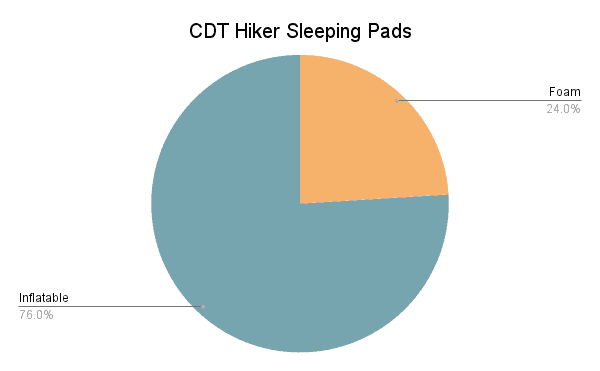
CDT Hiker Sleeping Pads
The Therm-a-Rest NeoAir XLite was the most common sleeping pad among Continental Divide Trail hikers this year. This air pad has an R-value of 4.2, weighs 12.5 oz / 354 g, packs down to 4.1 x 9 in / 10 x 23 cm, and is 2.5 in / 6.4 cm thick. The women’s version was the second-most-common pad on the trail this year and the small version was the third most common.
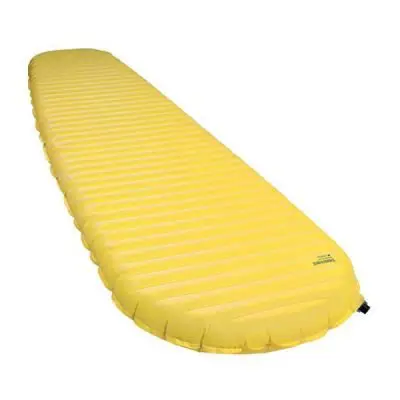
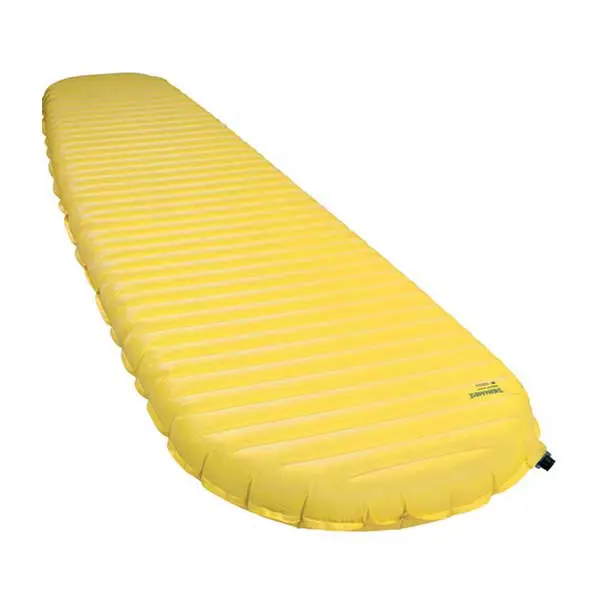
| # | PAD | RATING | PRICE | WEIGHT | R-VALUE | THICKNESS |
|---|---|---|---|---|---|---|
| 1 | Therm-a-Rest NeoAir XLite | 8.38 | $200 | 12.5 oz | 354 g | 4.2 | 2.5 in / 6.4 cm |
| 2 | Therm-a-Rest NeoAir XLite - Women's | 8.67 | $200 | 12.5 oz | 354 g | 5.4 | 2.5 in / 6.4 cm |
| 3 | Therm-a-Rest NeoAir XLite, Small | 7.53 | $180 | 8.3 oz | 235 g | 4.2 | 2.5 in / 6.4 cm |
| 4 | NEMO Switchback | 8.00 | $55 | 14.5 oz | 415 g | 2 | 0.9 in / 2.3 cm |
| 5 | Therm-a-Rest Z Lite Sol | 9.19 | $55 | 14 oz | 397 g | 2 | 0.75 in / 1.9 cm |
| 6 | Therm-a-Rest NeoAir XTherm | 8.85 | $230 | 17 oz | 482 g | 6.9 | 2.5 in / 6.4 cm |
| 7 | NEMO Tensor (Insulated) | 8.20 | $190 | 14.5 oz | 411 g | 4.2 | 3 in / 7.6 cm |
| 8 | Therm-a-Rest Z Lite Sol, Small | 8.40 | $48 | 10 oz | 284 g | 2 | 0.75 in / 1.9 cm |
| 9 | Sea to Summit UltraLight Insulated | 7.80 | $150 | 16.9 oz | 480g | 3.1 | 2 in / 5 cm |
| 10 | Therm-a-Rest NeoAir UberLite | 6.50 | $220 | 8.8 oz | 250 g | 2.3 | 2.5 in / 6.4 cm |
Insulated Jackets
Something to keep the top half of your body warm – whether this is a base layer, a fleece, or an insulated jacket – is something else every Continental Divide Trail hiker should have with them. Of this year’s class, 83.3% of hikers had an insulated jacket – meaning 16.7% of hikers said they didn’t bring one.
Besides the question of whether to bring an insulated jacket (insulated jacket because “down jacket” isn’t accurate since not all jackets use down insulation and because the word “puffy” isn’t quite official – also I want to spell the plural “puffys” because “puffies” looks weird and I’m never quite sure which to use), hikers need to decide whether they want their jacket to have a hood.
Many of the most popular insulated jackets have both hooded and non-hooded versions available. Typically the hoodless versions are called “jackets” while the hooded versions are called hoodies (e.g. Patagonia Micro Puff Jacket vs. Patagonia Micro Puff Hoody).
The percentage of hikers using hooded and not hooded (unhooded?) jackets on the Continental Divide Trail this year.
- 77.3% – Hooded
- 22.7% – Not hooded
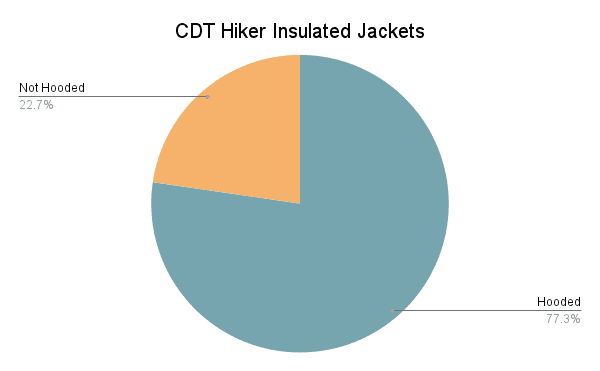
CDT Hiker Insulated Jackets
The Enlightened Equipment Torrid (Men’s/Women’s) was the most common jacket among Continental Divide Trail hikers this year. The 8.4 oz / 238 g jacket uses 2oz/yd² CLIMASHIELD APEX synthetic insulation and is available with either a 7D or 10D nylon shell. You can get it customized in a variety of colors and there’s a pullover version (Men’s/Women’s) available as well.
| # | JACKET | RATING | PRICE | WEIGHT | HOOD | POCKETS |
|---|---|---|---|---|---|---|
| 1 | Enlightened Equipment Torrid (M/W) | 8.93 | $185 | 8.4 oz | 238 g | Yes | 2 hand |
| 2 | Mountain Hardwear Ghost Whisperer/2 Hoody (M/W) | 8.81 | $325 | 8.8 oz | 249 g | Yes | 2 hand |
| 3 | Mountain Hardwear Ghost Whisperer 2 (M/W) | 8.90 | $300 | 8.3 oz | 235 g | No | 2 hand |
| 4 | Arc'teryx Cerium Hoody (M/W) | 9.38 | $400 | 10.2 oz | 290 g | Yes | 2 hand |
| 5 | REI Co-op Magma 850 (M/W) | 9.25 | $219 | 13.8 oz | 391 g | Yes | 2 hand | 1 chest |
| 6 | Patagonia Micro Puff Hoody (M/W) | 8.43 | $299 | 10.7 oz | 303 g | Yes | 2 hand | 2 drop |
| 7 | Rab Microlight Alpine Jacket (M/W) | 8.71 | $280 | 16.5 oz | 468 g | Yes | 2 hand | 1 chest |
| 8 | Montbell Plasma 1000 Jacket (M/W) | 9.67 | $329 | 4.9 oz | 138 g | No | 2 hand |
| 9 | Arc’teryx Cerium Jacket (M/W) | 8.40 | $375 | 10.6 oz | 300 g | No | 2 hand |
| 10 | Decathlon Forclaz Trek 100 (M/W) | 8.40 | $90 | 10 oz | 284 g | Yes | 2 hand |
Shells
Shells, or rain jackets, aren’t something that Continental Divide Trail hikers will be using every day, but they are also not something that should be completely overlooked. Weather on the CDT can be unpredictable and getting caught out on the trail unprepared in a storm could quickly turn into a life-threatening situation.
CDT Hiker Shells
The Outdoor Research Helium was the most common rainwear on the Continental Divide Trail this year. It’s one of the lightest options available at just 6.3 oz/ 179 g, but it’s also one of the lowest rated. There’s a single chest pocket (no hand pockets), an elastic drawcord hem, and elastic cuffs. It has a 30D nylon shell and a 2.5L waterproof laminate.
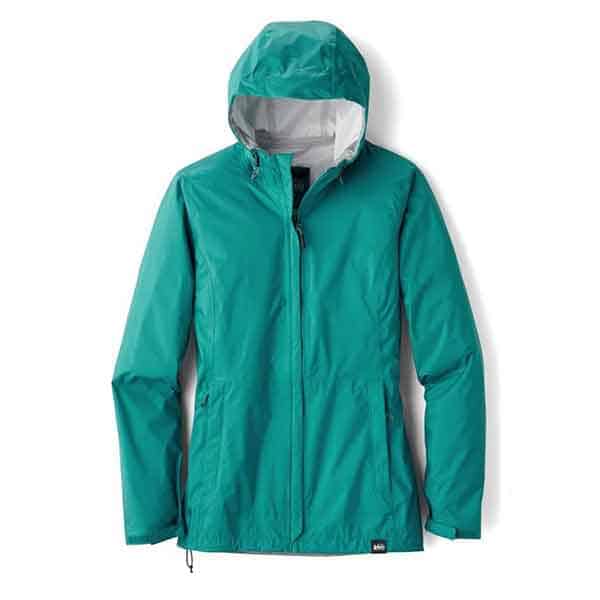
(discontinued)
| # | SHELL | RATING | PRICE | WEIGHT | FABRIC | PIT ZIPS |
|---|---|---|---|---|---|---|
| 1 | Outdoor Research Helium (M/W) | 6.91 | $159 | 6.3 oz | 179 g | 2.5-layer Pertex Shield (Nylon) | No |
| 2 | Frogg Toggs Ultra-Lite 2 | 7.80 | $25 | 5.5 oz | 156 g | Three-layer polypropylene | No |
| 3 | Montbell Versalite (M/W) | 8.61 | $249 | 6.4 oz | 182 g | 2-layer GORE-TEX Infinium Windstopper | Yes |
| 4 | Marmot PreCip (M/W) | 8.50 | $100 | 10.3 oz | 293 g | NanoPro 100% Nylon | Yes |
| 5 | REI Essential Rain Jacket | 6.50 | Discontinued | 8.8 oz | 250 g | 2.5L Nylon | No |
| 6 | Enlightened Equipment Visp (M/W) | 9.00 | $210 | 5.95 oz | 169 g | 7D nylon + PU membrane + tricot lining | Yes |
| 7 | Lightheart Gear Rain Jacket | 8.50 | $125 | 6 oz | 170 g | 20D Ripstop Polyester | Yes |
| 8 | The North Face Venture 2 (M/W) | 7.75 | $99 | 11.6 oz | 329 g | 2.5-layer DryVent Nylon | Yes |
| 9 | Zpacks Vertice (M/W) | 6.25 | $299 | 7 oz | 198 g | 3-layer w/ 7D Nylon | Yes |
| 10 | Patagonia Torrentshell (M/W) | 7.33 | $179 | 14.1 oz | 400 g | 3L 3.5-oz 50D ECONYL Recycled Nylon | Yes |
Fleeces
Many hikers opt to carry a fleece either in addition to or instead of an insulated jacket. They’re typically more comfortable to hike in (if you’re using your extra layers for more than just staying warm at camp) and can offer a bit more versatility than a puffy depending on the situation.
It was a pretty even split among hikers on whether they had a fleece; 62.5% of hikers brought a fleece.
The following breakdown shows the percentage of CDT hikers who brought only a fleece, brought only an insulated jacket, and those who brought both.
- 56.9% – Insulated jacket and fleece
- 35.5% – Insulated jacket only
- 5.6% – Fleece only
- 2.0% – Neither an insulated jacket nor a fleece (this is not recommended)
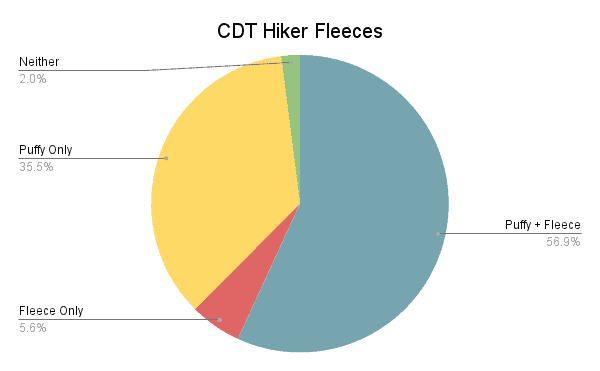
CDT Hiker Fleeces
The most common fleece on the Continental Divide Trail, for the second year in a row, was the Melanzana Microgrid Hoodie. Despite only being available locally at their store in Leadville, Colorado, most hikers with a fleece had a Melly – a 12.2 oz / 346 g pullover with a hood and a kangaroo pocket in the front. Know what goes through (past) Leadville? The Continental Divide Trail – if you needed a sign you should hike the CDT, here it is.
| # | FLEECE | RATING | PRICE | WEIGHT | FABRIC | ZIP |
|---|---|---|---|---|---|---|
| 1 | Melanzana Microgrid Hoodie | 9.26 | $78 | 12.1 oz | 343 g (L) | Polyester | None |
| 2 | Patagonia R1 Pullover (M/W) | 9.11 | $139 | 11.7 oz | 332 g | 93% Recycled Polyester, 7% Spandex | Quarter |
| 3 | Senchi Designs Lark | 9.29 | $95 | 5 oz | 142 g | Polartec Alpha Direct 90 | Quarter |
| 4 | Appalachian Gear Company ALL-PACA (M/W) | 9.00 | $158 | 11 oz | 312 g | Alpaca Fiber | None |
| 5 | Arc'teryx Delta LT (M/W) | 9.45 | $149 | 9.3 oz | 265 g | Polartec Classic 100 | Full |
Shoes
Shoes are perhaps one of the most important gear choices for Continental Divide Trail hikers as they’re what’s literally moving you up the trail. They’re also one of the most individual-specific pieces of gear.
The shoes that work, which may be the objectively best choice for one person, could easily be the objectively worst choice for another person. Some shoes may be more popular while others may be of higher quality materials, but ultimately the “best shoes” are the ones that work best for the individual.
You shouldn’t be afraid of trying on multiple models from multiple brands to find the most comfortable shoe for your foot. That said, the most common shoes, the Altra Lone Peak (Men’s/Women’s), were used by just over 45% of CDT hikers.
The overwhelming majority (over 97%) of hikers used low-top trail runners. Similarly, only a fraction of a percent of hikers used waterproof versions of shoes.
The following breakdown shows the percentage of CDT hikers who changed their shoe size during their hike.
- 71.4% – Did not change shoe size
- 24.0% – Sized up their shoe during hike
- 4.5% – Sized down their shoe during hike
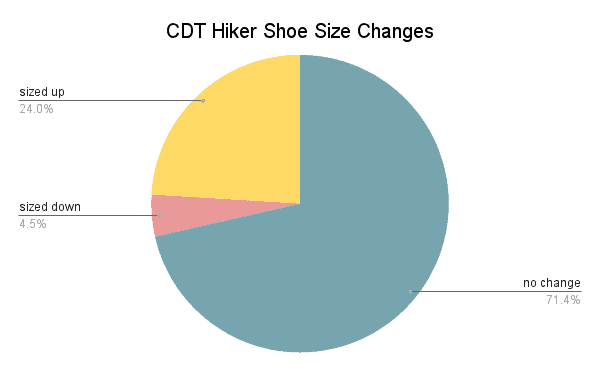
For more on hiking shoes, check out the Best Shoes for Thru-Hiking.
CDT Hiker Shoes
The Altra Lone Peak (Men’s/Women’s) was the most common shoe on the feet of Continental Divide Trail hikers this year – for the sixth year in a row. They cost $150 per pair, have a 0 mm heel-toe drop, and weigh 22 oz / 624 g per pair. On average, thru-hikers burned through five of these on the trail (4.9 to be exact). Altra (typically) releases a new version of the Lone Peak every year; at the time of publication, the latest version is the Lone Peak 7.
| # | SHOES | RATING | PRICE | WEIGHT | HEEL-TOE DROP | # USED |
|---|---|---|---|---|---|---|
| 1 | Altra Lone Peak (M/W) | 8.21 | $150 | 22 oz | 624 g | 0 mm | 4.88 |
| 2 | HOKA ONE ONE Speedgoat (M/W) | 9.06 | $155 | 20.6 oz | 584 g | 4 mm | 4.87 |
| 3 | Altra Olympus (M/W) | 8.25 | $180 | 24.6 oz | 697 g | 0 mm | 5.60 |
| 4 | Brooks Cascadia (M/W) | 7.20 | $130 | 19.1 oz | 542 g | 8 mm | 4.60 |
| 5 | Topo Terraventure (M/W) | 9.20 | $130 | 20.4 oz | 578 g | 3 mm | 4.81 |
| 6 | Merrell Moab Ventilator (M/W) | 8.38 | $110 | 23.2 oz | 658 g | 11.5 mm | 4.21 |
| 7 | Altra Timp (M/W) | 5.60 | $160 | 21.8 oz | 618 g | 0 mm | 5.00 |
| 8 | Topo Ultraventure (M/W) | 9.17 | $150 | 21 oz | 595 g | 5 mm | 4.79 |
Shoe Notes: Even if you knew for certain that each pair of your shoes would last you 700 mi / 1,125 km, buying yourself four pairs of shoes at the start of the hike would be a risky decision – what if the shoes aren’t as comfortable as you thought? What if your feet swell?
Remember, once you know that you’re going to need a new pair, you can buy shoes and have them mailed ahead on the trail (to a post office, hotel, local outfitter, trail angel, etc.). If you encounter an emergency situation, you can always buy locally or simply wait around for your shoes to show up in the mail (this latter situation happens more than you might imagine).
Socks
After shoes, the socks of a Continental Divide Trail hiker probably take the most (if not more) damage from the daily grind of the trail. The standout sock brand among hikers – occupying all five most common spots – is Darn Tough.
Hikers love these socks not only for their comfort and durability but because they’re “Unconditionally Guaranteed for Life”. Basically, wear a hole in your sock(s) while hiking and you can get a new pair (reasonable exceptions apply such as fire damage or animal tearing apart). Over 83% of CDT hikers had Darn Tough socks on the trail.
For more on hiking socks, check out the Best Socks for Thru-Hiking.
CDT Hiker Socks
Darn Tough dominated Continental Divide Trail hikers’ feet this year with the Darn Tough Hiker Quarter Midweight (Men’s/Women’s) being the most commonly used model. They are made of 60% merino wool, 38% nylon, and 2% spandex, they have a medium cushion, cost $20 a pair, and have an unconditional lifetime guarantee. The second most common sock was the crew length of this same sock.
| # | SOCKS | RATING | PRICE | FABRIC | CUSHION | HEIGHT |
|---|---|---|---|---|---|---|
| 1 | Darn Tough Hiker Quarter Midweight (M/W) | 9.11 | $20 | 60% merino wool, 38% nylon, 2% spandex | Medium | Ankle |
| 2 | Darn Tough Hiker Micro Crew Midweight (M/W) | 9.31 | $25 | 61% merino wool, 36% nylon, 3% spandex | Medium | Crew |
| 3 | Darn Tough Light Hiker Micro Crew (M/W) | 9.28 | $23 | 54% nylon, 43% merino wool, 3% spandex | Light | Crew |
| 4 | Darn Tough Light Hiker Quarter (M/W) | 9.27 | $20 | 52% nylon, 44% merino wool, 4% spandex | Light | Ankle |
| 5 | Darn Tough Hiker Boot Midweight (M/W) | 8.33 | $27 | 64% merino wool, 33% nylon, 3% spandex | Medium | Crew |
| 6 | Injinji Trail Midweight Mini-Crew (M/W) | 9.13 | $16 | 58% nylon, 39% CoolMax polyester, 3% spandex | Medium | Mini-Crew |
| 7 | Darn Tough Light Hiker No Show (M/W) | 8.53 | $19 | 56% nylon, 41% merino wool, 3 % spandex | Light | No Show |
| 8 | Injinji Run Midweight Mini-Crew | 9.00 | $15 | 67% nylon, 30% CoolMax polyester, 3% Lycra | Medium | Mini-Crew |
Stoves
Hikers have a wide variety of stoves and fuel sources to choose from when selecting their backpacking stoves. Fuel sources include denatured alcohol/HEET, solid fuel, liquid fuel, isobutane/propane (aka gas canisters), and even old-fashioned wood.
The overwhelming majority (95.1%) of hikers carried stoves that use isobutane/propane gas canisters.
That said, there were still a number of hikers who were stoveless (that is, they did not carry a stove with them on the trail) and others who changed their minds as the trail went on. Here’s a breakdown of what that looked like.
- 65.9% – Carried stove for the entirety of hike
- 20.2% – Stoveless
- 7.2% – Began with stove and then went stoveless
- 6.3% – Began stoveless and then got a stove
- 0.5% – Alternated multiple times between stoveless and carrying a stove
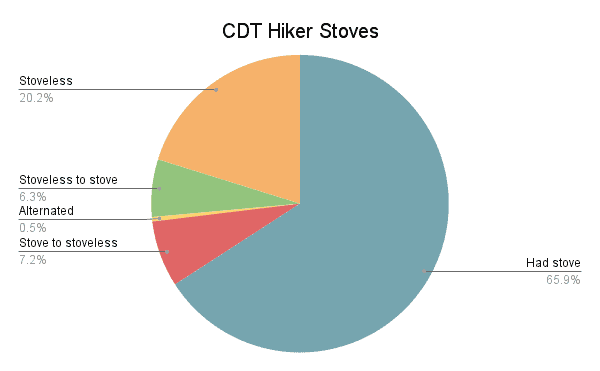
CDT Hiker Stoves
The MSR PocketRocket 2 was the most common stove on the Continental Divide Trail this year (for the second year in a row). It’s a 2.6 oz / 74 g canister stove that requires a lighter to ignite (i.e. no push-button ignition). The push-button start version, the MSR PocketRocket Deluxe, was the fourth-most-common stove (also for the second year in a row). The reported boil time for one liter of water is 3.5 minutes.
| # | STOVE | RATING | PRICE | WEIGHT | INTEGRATED POT | FUEL |
|---|---|---|---|---|---|---|
| 1 | MSR PocketRocket 2 | 8.84 | $50 | 2.6 oz | 73 g | No | Isobutane canister |
| 2 | BRS 3000T | 8.21 | $30 | 0.9 oz | 25 g | No | Isobutane canister |
| 3 | SOTO Windmaster | 9.54 | $65 | 2.3 oz | 65 g | No | Isobutane canister |
| 4 | MSR PocketRocket Deluxe | 8.78 | $80 | 2.9 oz | 83 g | No | Isobutane canister |
| 5 | SOTO Amicus | 8.83 | $45 | 2.9 oz | 81 g | No | Isobutane canister |
| 6 | JetBoil MiniMo | 8.60 | $155 | 14.6 oz | 414 g | Yes | Isobutane canister |
| 7 | Snow Peak LiteMax Titanium Stove | 8.20 | $60 | 1.9 oz | 56 g | No | Isobutane canister |
| 8 | JetBoil Flash | 9.00 | $115 | 13.1 oz | 371 g | Yes | Isobutane canister |
| 9 | JetBoil MicroMo | 8.67 | $148 | 12 oz | 340 g | Yes | Isobutane canister |
| 10 | MSR WhisperLite | 7.67 | $135 | 9.5 oz | 269 g | No | White gas |
Water Treatment
Despite what a small vocal minority of hikers may tell you, water treatment is essential on the Continental Divide Trail. Pooping your pants on the trail (or in town) because you have contracted giardia is not a fun time. On that note, be sure to sanitize your hands frequently and to keep your hands out of bags of food – especially other people’s – pour that delicious snack into your hand instead.
Hikers have many options available when it comes to water filtration – hollow fiber membrane squeeze filters, pump filters, UV filters, and chemical treatments (e.g. bleach or iodine) to name a few.
The hollow membrane squeeze filter is by far the most popular choice among CDT hikers with a reported 93.5% of hikers using a hollow membrane squeeze filter. Four of the top five most common water treatments fall into this category, as do four of the five highest-rated. These filters are typically inexpensive, lightweight, and easy to use, but they can also clog quickly and are susceptible to freezing (and breaking), so it’s important to properly care for them on the trail.
The most common hollow membrane squeeze filter (and the most common water treatment overall), the Sawyer Squeeze, was used by nearly 61% of hikers.
CDT Hiker Water Treatment
The Sawyer Squeeze was (by far) the most common Continental Divide Trail water filter this year – for the fifth year in a row. It’s a $39, 3 oz / 85 g hollow fiber filter that rids your drinking water of protozoa and bacteria (and floaties). It can be used with Sawyer bags (included with the filter) or with compatible water bottles (Smartwater is the bottle of choice for many hikers). The Sawyer comes in two smaller sizes as well, the Sawyer Micro and the Sawyer MINI.
| # | TREATMENT | RATING | PRICE | WEIGHT | MEDIUM | REMOVES |
|---|---|---|---|---|---|---|
| 1 | Sawyer Squeeze | 8.80 | $39 | 3 oz | 85 g | Hollow fiber | Protozoa / bacteria |
| 2 | Katadyn BeFree | 7.24 | $45 | 2.3 oz | 65 g | Hollow fiber | Protozoa / bacteria |
| 3 | Platypus QuickDraw | 8.86 | $45 | 2.2 oz | 63 g | Hollow fiber | Protozoa / bacteria |
| 4 | Aquamira | 8.89 | $15 | 3 oz | 85 g | Chlorine dioxide | Protozoa / bacteria / viruses |
| 5 | Bleach | 8.89 | N/A | N/A | Chlorine dioxide | Protozoa / bacteria / viruses |
Food Storage
Unlike the Pacific Crest Trail, hikers are not required to carry bear canisters anywhere along the Continental Divide Trail.
That said, carrying a bear canister (or animal-proof-ish food bag) is never a bad idea and many hikers choose to carry something to protect animals from their food (and their food from animals) despite the weight penalty. Over 68% of CDT hikers carried an additional piece of gear to secure their food.
Most Common CDT Food Storage
The Ursack Major XL was the most common food storage option on the Continental Divide Trail this year. The second and third most common food storage options were the smaller and larger version of the Major XL. The difference between the Major and the fourth most common AllMitey is that the AllMitey is also designed to be rodent/critter-proof, whereas the Major is only designed to be bear-proof.
| # | CANISTER | RATING | PRICE | WEIGHT | CAPACITY | MATERIAL |
|---|---|---|---|---|---|---|
| 1 | Ursack Major XL | 8.04 | $110 | 8.8 oz | 250 g | 15 L | Spectra |
| 2 | Ursack Major | 8.00 | $100 | 7.6 oz | 216 g | 10 L | Spectra |
| 3 | Ursack Major 2XL | 8.50 | $130 | 10.9 oz | 309 g | 20 L | Spectra |
| 4 | Ursack AllMitey | 7.86 | $210 | 13.8 oz | 392 g | 20 L | High-performance UHMWPE fabric/Kevlar |
| 5 | BV500 | 7.67 | $93 | 41 oz | 1.162 kg | 11.5 L | Polycarbonate |
Trekking Poles
Not all hikers carry trekking poles and not all hikers who carry them do so for the entirety of the trail (careful not to leave your trekking poles behind – especially in a hitch). That said, with over 93% of CDT hikers using trekking poles, they’re certainly worth considering if you’ve never tried them out. Here are the most common and highest-rated from this year’s CDT class.
CDT Hiker Trekking Poles
The Black Diamond Alpine Carbon Cork was the most common trekking pole on the Continental Divide Trail this year. They weigh 17.1 oz / 485 g (per pair), have a carbon fiber shaft, cork grips, external lever lock, and collapse down to 24 in / 61 cm.
| # | POLES | RATING | PRICE | WEIGHT | HANDLE | SHAFT | COLLAPSED LENGTH |
|---|---|---|---|---|---|---|---|
| 1 | Black Diamond Alpine Carbon Cork | 9.29 | $200 | 17.1 oz | 485 g | Cork | Carbon fiber | 24 in / 61 cm |
| 2 | Black Diamond Trail Ergo Cork | 8.75 | $210 | 15.8 oz | 447 g | Cork | Carbon fiber | 15.7 in / 40 cm |
| 3 | Black Diamond Trail | 8.84 | $120 | 17 oz | 482 g | Foam | Aluminum | 25 in / 64 cm |
| 4 | Black Diamond Distance FLZ | 9.08 | $170 | 15.7 oz | 445 g | Foam | Aluminum | 16 in / 40 cm |
| 5 | Cascade Mountain Tech Carbon Fiber | 9.25 | $75 | 15.6 oz | 442 g | Cork | Carbon fiber | 26 in / 65 cm |
| 6 | Leki Corklite | 8.67 | $160 | 19.1 oz | 542 g | Cork | Aluminum | 24.4 in / 62 cm |
| 7 | Leki Legacy Lite | 9.75 | $100 | 18 oz | 510 g | Cork | Aluminum | 26 in / 65 cm |
| 8 | Leki Micro Vario Carbon | 8.00 | $200 | 17 oz | 482 g | Foam | Carbon fiber | 15.7 in / 40 cm |
| 9 | Black Diamond Alpine Carbon Z | 9.40 | $210 | 15.8 oz | 447 g | Cork | Carbon fiber | 15.7 in / 40 cm |
| 10 | Gossamer Gear LT5 | 6.60 | $195 | 9.8 oz | 278 g | Foam | Carbon fiber | 23.5 in / 60 cm |
Satellite Messengers/PLBs
I am a huge proponent of carrying a satellite messenger or PLB in the backcountry. Honestly, recreating – at least thru-hiking – without one is borderline irresponsible (at best). Fortunately, these devices are becoming more popular; over 82% of CDT hikers carried a satellite messenger or PLB on the trail.
What’s the difference between a PLB and a satellite messenger? Essentially, a PLB is a device without a subscription and with a singular function – to send an SOS in an emergency. PLBs generally use a different satellite network than satellite messengers and are (at least widely thought to be) more reliable. However, this is not to say that satellite messengers are unreliable.
A satellite messenger (generally) offers two-way communication and additional features such as real-time tracking or maps. Satellite messengers usually require a subscription to remain active.
For more on satellite messengers and PLBs, check out the Best Satellite Messengers for Thru-Hiking.
CDT Hiker Satellite Messengers/PLBs
The Garmin inReach Mini was the most common personal locator beacon on the Continental Divide Trail this year. The new model, the inReach Mini 2, was the second most common (and the highest rated). The mini is an awesome piece of equipment that can be used for two-way messaging, navigation, tracking, and as an SOS device. It weighs 3.5 oz / 99 g and requires a monthly (or annual) subscription to function at full capacity.
| # | DEVICE | RATING | PRICE | WEIGHT | MESSAGING | MAPS |
|---|---|---|---|---|---|---|
| 1 | Garmin inReach Mini | 8.61 | $350 | 3.5 oz / 99 g | Two-way | No |
| 2 | Garmin inReach Explorer+ | 8.57 | $450 | 7.5 oz / 213 g | Two-way | Yes |
| 3 | Garmin inReach Mini 2 | 9.27 | $350 | 3.5 oz / 99 g | Two-way | No |
| 4 | Spot Gen3 | 8.33 | N/A | 4 oz / 113 g | One-way (presets) | No |
| 5 | ZOLEO Satellite Communicator | 8.75 | $200 | 5.3 oz / 150 g | Two-way | No |
| 6 | SPOT Gen4 | 8.33 | $150 | 5 oz / 142 g | One-way (presets) | No |
Ice Axes
Ice axes are not something all Continental Divide Trail hikers will use. How much snow a hiker encounters depends on the year, the hike’s direction, and the hiker’s start date.
Perhaps the most important thing to do when choosing an ice axe for the trail is to make sure you know how to use it. An ice axe is not a magical amulet of protection that you strap to your pack or carry through the mountains to ward off the ills of snow travel. It’s a tool that can assist you with snow travel and a tool that has the potential to save your life. If you don’t know what self-arresting is, that’s a good place to start.
This year, just over 61% of hikers carried an ice axe.
CDT Hiker Ice Axes
The C.A.M.P. Corsa was the most commonly found ice axe on the Continental Divide Trail this year. It’s the lightest ice axe on the list at 7.2 oz / 204 g and has an all-aluminum construction. The $120 axe has a straight shaft and comes in 50, 60, and 70 cm lengths.
| # | AXE | RATING | PRICE | WEIGHT | MATERIAL | SHAFT SHAPE |
|---|---|---|---|---|---|---|
| 1 | CAMP USA Corsa | 8.94 | $120 | 8.2 oz | 232 g | Aluminum | Straight |
| 2 | Black Diamond Raven | 8.31 | $100 | 15.7 oz | 445 g | Aluminum, steel | Straight |
| 3 | CAMP USA Corsa Nanotech | 9.33 | $160 | 8.9 oz | 252 g | Aluminum, steel | Curved |
| 4 | Petzl Summit 2 | 8.50 | $130 | 13.4 oz | 380 g | Aluminum, steel | Curved |
| 5 | Black Diamond Raven Pro | 9.00 | $130 | 14.2 oz | 406 g | Aluminum, steel | Curved |
Traction Systems
Similar to ice axes, traction systems are not something that every Continental Divide Trail hiker will need every year. If you’re unfamiliar with what these are, they’re essentially the younger sibling to a crampon – spikes on your feet to make travel across snow and ice easier. Most attach to your shoes via a stretchy harness and have spikes on the bottom below your heel and forefoot for traction.
This year, just over 80% of hikers carried a traction device.
CDT Hiker Traction Systems
The Kahtoola MICROspikes Traction System was the most common traction system on the Continental Divide Trail this year. It’s an over-the-shoe, spikes-on-the-bottom system that weighs 11 oz / 312 g. It comes in four sizes and has stainless steel spikes.
| # | TRACTION | RATING | PRICE | WEIGHT | SPIKES |
|---|---|---|---|---|---|
| 1 | Kahtoola MICROspikes | 8.62 | $75 | 11 oz | 312 g | 12 |
| 2 | Hillsound Trail Crampons | 8.46 | $75 | 15.7 oz | 445 g | 10 |
| 3 | Snowline Chainsen Light | 9.50 | $70 | 8.6 oz | 243 g | 12 |
| 4 | Black Diamond Contact Strap Crampons | 9.20 | $150 | 28.5 oz | 808 g | 10 |
| 5 | Kahtoola K 10 Hiking Crampons | 8.50 | $100 | 23.6 oz | 670 g | 10 |
Fitness Trackers
Fitness trackers are not something every hiker uses and are typically overlooked as a piece of thru-hiking gear but they can be useful on the trail. Just under 29% of CDT hikers had a smartwatch or fitness tracker with them on their hikers to collect that sweet hiking data (or maybe to just tell them the time).
CDT Hiker Fitness Trackers
This year, the Garmin fenix was the most common fitness tracker/smart watch on the Continental Divide Trail. It’s a fully-featured tracker that can provide stats such as speed, altitude, heart rate, weather, sunrise and sunset, storm warnings, maps, and more. It can also be loaded with music, paired via Bluetooth, and is water-resistant to 100 meters.
| # | DEVICE | RATING | COST | BATTERY | ALTIMETER |
|---|---|---|---|---|---|
| 1 | Garmin Fenix | 9.40 | $700 | Smartwatch: 18 days GPS: 57 hrs Expedition: 40 days | Pressure-based |
| 2 | Garmin Instinct | 8.62 | $450 | Smartwatch: 28 days GPS: 30 hrs (48 with solar) | Pressure-based |
| 3 | Fitbit Charge | 6.00 | $150 | Smartwatch: 7 days GPS: 5 hrs | Satellite-based |
| 4 | Garmin Forerunner | 9.75 | $600 | Smartwatch: 2 weeks GPS (w/out music): 36 hrs | Pressure-based |
| 5 | COROS PACE 2 | 8.67 | $200 | Smartwatch: 20 days UltraMax: 60 hrs GPS: 30 hrs | Pressure-based |
Highest-Rated vs Most Common Gear
How do the highest-rated and most common Continental Divide Trail gear lists stack up? As with previous years, it appears most hikers opted for lighter gear, but those who carried heavier gear were often happy with their choices. The eternal struggle between comfort and weight in the world of thru-hiking marches forward.
| CDT GEAR | HIGHEST-RATED | MOST COMMON |
|---|---|---|
| Total cost* | $3,682 | $3,682 |
| Total weight – Big 3 | 5.65 lbs / 2.561 kg | 4.78 lbs / 2.170 kg |
| Total weight – Big 4 | 6.71 lbs / 3.043 kg | 5.56 lbs / 2.524 kg |
| All CDT gear (minus snow gear)** | 9.5 lbs / 4.308 kg | 8.36 lbs / 3.790 kg |
| All CDT gear*** | 13.68 lbs / 6.206 kg | 9.55 lbs / 4.334 kg |
Note: The most common shelter is not freestanding and requires stakes and trekking poles – (i.e. additional weight) to be set up. Additionally, the most common and highest-rated stoves do not include the weight of a pot.
*This does not include the price of a fitness tracker
**This does not include an ice axe, traction, poles, shoes, socks, or a fitness tracker
***This does not include poles, shoes, socks, or a fitness tracker
Base Weights
Base weight. The thing that completely defines some hikers, that others have difficulty defining, and that others don’t care about at all. Simply put, it’s how much your backpack weighs when fully loaded with your gear, minus the weight of food, water, and/or consumables (like your poopy paper).
Some hikers will tell you the best gear is the lightest gear and that there’s no benefit to carrying any “unnecessary” weight in your pack. Others will tell you ultralight gear is little better than badly-sewn-together garbage and that having quality gear (without regard to weight) is the only way to live your best trail life. They’re both right and they’re both wrong. The “right gear” is the gear that works for you (and that you’re happy with).
Ultimately, yes, carrying a lighter pack is more enjoyable than carrying a heavy pack. However, not having the proper gear if/when you need it can quickly eliminate any benefit realized from having a lighter pack. The base weight for you is the one you’re the happiest carrying. Anyone who tries to tell you otherwise has no business telling you so.
| BASE WEIGHTS | Thru-Hikers | Thru-Hikers (1) | Thru-Hikers (0) |
|---|---|---|---|
| START | 17.61 lb / 7.988 kg | 17.52 lb / 7.947 kg | 18.17 lb / 8.242 kg |
| END | 16.57 lb / 7.516 kg | 16.52 lb / 7.493 kg | 16.91 lb / 7.670 kg |
| CHANGE | -1.04 lb / -472 g | -1.00 lb / -454 g | -1.26 lb / -572 g |
| % CHANGE | -6.1% | -5.9% | -7.2% |
Additional Gear Carried
The items broken down above in detail are not the only items in CDT hiker backpacks. There’s a lot of gear that while not completely necessary (shoes, for example), is still carried by many CDT hikers. If you think any of these should be added to the detailed breakdown please let me know (headlamps are one I’m considering including in the future).
- 88.3% – Gloves
- 75.0% – Trowel
- 70.0% – Bottom Baselayer
- 62.8% – First-Aid Kit
- 58.3% – Rain Pants
- 57.8% – Top Baselayer
- 57.8% – Neck Gaiter (aka Buff)
- 42.9% – Gaiters (Shoes)
- 30.6% – Wind Jacket
- 17.2% – Wind Pants

Luxury Items
Continental Divide Trail hikers obsess over their gear lists and what goes into their packs, but most everyone has something that could be considered a luxury item by someone else. Some people believe their phone to be an essential and multifunctional piece of gear while others may scoff at the idea of using one to take photos, listen to music, and use GPS in the wilderness.
In the thru-hiking community, the term “luxury item” can mean a lot of different things depending on who you’re talking to. Essentially, it’s anything not necessary for your trip. However, what’s considered to be necessary can change a lot depending on who you’re talking to.
Here are the most popular “luxury items” on the trail this year.
- 89.5% – Battery Pack
- 44.2% – Pillow
- 37.0% – Camp Shoes
- 29.8% – Sleeping Bag Liner
- 23.8% – Journal
- 21.5% – Town Clothes
- 14.9% – Towel
- 9.9% – Massage Ball
- 6.6% – Kindle
- 5.5% – Book
- 5.5% – Deodorant
- 4.4% – Down Pants
- 3.3% – Fishing Pole
- 5.5% – Cards/Game
- 1.7% – Instrument
- 0.6% – Frisbee
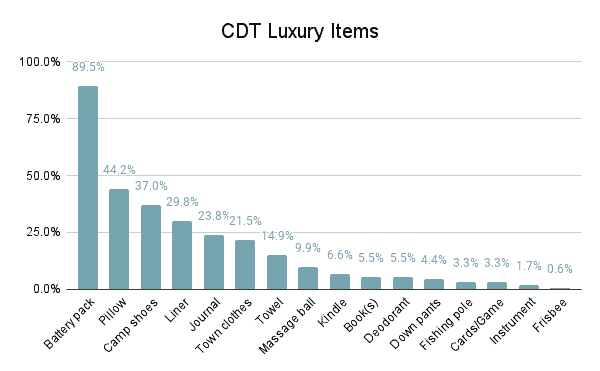
Battery Packs
It should be noted that a lot of hikers yelled at me about including battery packs in the “luxury item” category. Perhaps they’ve now officially become a standard piece of backpacking equipment? Feel free to yell at me in the comments and let me know if battery packs should have their own detailed item breakdown in future surveys.
Thru-Hikers
14,238 mAh
Average battery pack size
(M = 12,500 | σ = 6,857)
Gear Advice
To wrap up this portion of the gear breakdown (posts on couples’ gear and gear broken down by gender are on the way), I have advice from this year’s CDT Class on gear choices and gear lists for future CDT hikers.
- A lot of my gear broke, and I had to make do with what the outfitters had. These outfitters do not have ultralight gear, so my pack weight sometimes went up. Also, a lot of towns did not have good outfitters, so I had to make do with ad-hoc systems until my gear arrived via the post office or I reached a good outfitter. Buy for durability, a couple of extra ounces after you’ve been on the trail for a month or two isn’t that big of a deal.
- I was most concerned about the cold nights going into this hike, and I found that it wasn’t nearly as much of a problem as I feared. The only difference between my sleep system on the Pacific Crest Trail and the CDT was that I upgraded to the NeoAir XTherm. It’s hard to say just how much of an impact it had, but from my anecdotal evidence (I am a wuss when it comes to the cold and always sleep cold) this was a very worthwhile decision.
- Find some durable plastic grocery bags for your wet tent/fly so it doesn’t soak your pack. I also found them useful for pillows and general organization.
- Do not underestimate the cold! Make sure your rain gear keeps you DRY. Hypothermia is no joke, and the CDT is way more intense than either the Pacific Crest Trail or the Appalachian Trail.
- Make sore rain pants can be donned without taking off your shoes and can be cinched around the waist. No GORE-TEX shoes – they never dry out.
Support the Survey
Every year, I receive numerous requests for guidance on how to support the surveys. Beyond sharing them with your close-knit bubble of weird hiker friends, the best way to support the survey is to contribute via Patreon. You’ll get access to exclusive posts, discount codes, live streams, and super awesome stickers so that everyone will know how cool you are.
If you’re not into Patreon, that’s cool; you can Venmo @halfwayanywhere, Cash app $halfwayanywhere, or PayPal moc.erehwynayawflah@tcatnoc
This is not expected. The data collected in the survey will always be free and accessible to everyone who wants/needs it. Your support is much appreciated and helps pay the website (and survey) bills.



If there is anything you can think of that would make this information more useful (or any more gear-related cross-referencing you would like to see), then please leave a comment below and let me know.
Affiliate Disclosure: This page may contain affiliate links, which means I may receive small commissions for purchases made via these links at no additional cost to you. This helps pay the bills and keep the site up and running. Thank you for your support!
